#she travels across the globe all the time for environmental work
Explore tagged Tumblr posts
Text
Vent about people better than me i guess
How about people stop telling me I'm mature for my age!!! I know!!! Its not like I wanted this! Its like my brain sped up and went grew faster than it was supposed to. And Its not like i have anything to prove for it either. Unlike my friend. Shes super smart and pretty and she's in college even though shes a sophmore, she does cool stuff like going to a big fancy student board of Representatives meeting in a different state and im just here being stupid and ugly and depressed. She does so much but its just because shes better than me i guess. She gets to meet nobel peace prize winners and im here on tumblr whining instead of doing anything valuable with my life. Idk It's so weird I'm so weird kill me (T.T)
#shes so cool i wish i was like her#she knows what like 7 languages too#she travels across the globe all the time for environmental work#vent#vent post#🌧️ melo says sad shit
3 notes
·
View notes
Text
10 Fascinating Facts About Zeba Urfi’s Artistic Evolution

Zeba Urfi, a popular name from this world of art, is well-known for her travel from the traditional world of art to the contemporary. This travel involved not only the passage through different art forms but also through different stages of evolution in her artistry. All along, it had gone through great rigour, creativity, and simple innovativeness in the performance. Below are the 10 most interesting facts in the closet about her endeavours which actually reflect her evergreen growth and significance in the field of art.1. Early Inspirations Rooted in CultureHer artistic journey began from childhood which reflected through her surroundings, later developed into an inspiration source. Inspirations also caught on by the older artistic works which show traditional motifs; these were important early works later translated into styles that evolved through time.2. A Self-Taught GeniusMany artists who undergo formal training find themselves somewhere in between these two worlds of learning. But she is mostly self-taught. Her willpower to learn by practice and observation has demonstrated that she really knows what self-motivated success is all about, mastering different artistic techniques with total gritty commitment.3. Embracing Modernity While Honoring TraditionZeba Urfi has mastered the art of melding the traditional with modern designs, and it can be called a hallmark of her evolution. Most of her works juxtapose heritage-based patterns with modern themes to achieve a timeless appeal.4. Exploration of Diverse MediumsHer willingness and preparedness to experiment in a variety of media have been the marks of her artistic growth. From canvas and wood to digitalities, she has mastered the art of storytelling through all materials: this shows her adaptability and creative courage.5. Advocating for Women’s Empowerment Through ArtHer work typically conveys a significant message of empowerment, most especially to women. She uses her artwork to challenge social conventions and to honour the tenacity and strength of women: her art is not just visually stunning but also socially relevant.6. Recognition in International CirclesZeba Urfi’s metamorphosis into an internationally recognized name from a local artist is the manifestation of her aptitude. The exhibition made waves around the globe, accruing laurels and expanding her influence.7. Collaboration with Emerging ArtistsThere is an essence of collaboration associated with her, where she collaborates most with emerging artists to realize new talent. The consequences of her mentorship have created waves among the rising wave of artists, thereby forwarding the legacy of innovation.8. A Signature Style That Speaks VolumesThrough the years, Zeba became known very well for her signature style, with intense colour, fine detailing, and themes of emotion bringing her to fame among art celebrities.9. Environmental Consciousness in ArtHer recent creations of hers put an emphasis on sustainability, especially concerning eco-friendly materials. Along with her psychological adaption to environmental consciousness, she believes in using art and its related activities as advocacy.10. A Legacy in the MakingThe artistic evolution of Zeba Urfi is not only a part of her own growth but also the legacy which she creates. Her journey motivates and inspires budding artists by showing them how with their passion, hard work, and a little bit of creativity, wonders can be created.ConclusionThe emergence of Zeba Urfi as an artist tells a tale of transformation and influence. It encompasses everything from being inspired as a child artist to eventually becoming a world-renowned artist; such is the magic in her journey that speaks of every dimension in the growth of art. She carries on her shoulders the torch of art that speaks across cultures and generations, as she is able to strike a balance between tradition and innovation and remains relevant in her values. The unfolding legacy of her still stands as a pillar of creativity, resilience, and vision in the fast-flowing stream that is art.
0 notes
Text
game review - final fantasy xvi

some context: the only thing i knew about this game was it had a medieval setting. literally did not bother to look up anything about it, i kind of got the feeling there wasn’t much out there to begin with.
the story: the world and lore of ff16 is interesting. the idea that the crystals were bad and causing environmental problems, even though in the short term they helped society so much, you could tell it was a comparison to our world. similar to the whole environmental overlords and their private pinkerton army which was final fantasy 7. but how the story and game progression actually played out? well that’s kind of a different story.
it was much longer than it needed to be. after each story mission you always had to backtrack to our hideout, just to watch a cutscene to lead to another story mission. the plot never really picked up, it was always stilted and held back by the fact you never felt like you did much. you could all but guarantee that whatever you did would be met with, ‘let’s go back to the hideout.’ i just always got the feeling of we were in the first fetch-quest part of the story before it was suppose to pick up, but it just never did.
it would have flowed so much better if you could just cut out the middle man hideaway cutscenes, like just keep going!! why do we keep traveling halfway across the globe just to turn back!! keep moving forward!!!
the characters: the two main characters (i contest jill being a main character, even if the ffwiki says otherwise, btw) were so bland. clive was just some guy, and jill was just there. pretty much every other characters whether good, bad, or neutral outshined these two wet blankets. i will admit they had their moments. for jill in particular when she killed that priest. this isn’t a dig on the voice acting, i actually thought it was okay, but just how those two are written... ugh....
clive was just noctis if he wasn’t a twink and didn’t have his iphone. he had black hair, was a prince, had a dog companion, and had antagonist induced headaches.
don’t even get me started on their ‘romance’. good lord. they were just together because clive was a man and jill was a woman. remember how i said i knew nothing about this game? yeah for like the first four hours of this game i thought they were siblings. it didn’t help they looked exactly the same. (on that note, i thought benedicta was anabella pretty much until her history with cid came to light.)
speaking of anabella, literally what was her problem. she is the most cartoonishly evil villain i have ever seen in a piece of media that wants to be taken seriously and have a dark/gritty vibe to it. genuinely, why was she like that. i wanted her and benedikta to play a larger part but they never really did. i find the women of this game were severely undermined larger parts which i think they could have fulfilled. (the misogyny......)
another thing about jill, though: she is practically written out of the story after having sex with clive and giving him shiva!!!! what the fuck! she was practically demoted to a npc. and there was a sidequest to cheer her up because even the writers knew they threw her to the wayside after putting out! in the above paragraph i wrote the misogyny halfly joking but the more i think about it i am very serious.
ultima, oh ultima. you had buttholes for eyes and gaping holes for ears. when he was a mysterious character, i enjoyed the mystique, but after a while it just kind of wore off. the mystique i am interested in is leviathan the lost. that was a cool concept, i was wondering why some more common final fantasy summons did not make the cut. guess they are just lost eikons.
my favorite character: barnabas, the mega dilf. he was hot as fuck, i cannot tell a lie. his accent was hot as shit too. i love crazy men. and that other white haired motherfucker was his got damn horse.
the battling: like it was okay, half the time i pressed R1 to defend it never worked. i guess i just couldn’t time it right. it was still pretty easy though. i played on the action focused version and the only time i really got game over were during the eikon fights and when i tried my hand at the s rank hunts.
the eikon fights, wow. some of the highest highs and lowest lows of this game. the beginning fights were pretty interesting, all the good things about them culminated in the hugo kupka fight. that was the best fight of this game, full stop. it was somehow cinematicly choreographed while still having some stakes that required you to actually try to beat it. i’ve never had more fun in a modern game’s fight than this battle. the subsequent bahamut and odin fight, well.... uhh..... they were definitely battles.
this is kind of fits in the under characterization as well but, there is no dialogue when you are on the field between clive and any of the npc party members. it is absolute silence, i forgot who was in my party half the time because they were mute.
side quests: i did all the side quests that popped up and all the hunts bar the s ranks (because i thought i may be under leveled.) there were a lot. it was definitely a chore. a lot of characterization for secondary characters were found in the side quests that i thought should have made it to the main scenario, but whatever. by the end i was sick and tired of it, such a fucking slog.
other odds and ends: i liked walking around the map and finding all the little places, that felt rewarding. but the treasures you would find were absolutely useless. you’d get an abundance of crafting materials, yet there were so few recipes you’d learn (which most were single use creations i.e. armor and weapons) that you were left with an overabundance of useless shit. maybe it picks up in the post game? i haven’t really played the postgame much, maybe it changes. at least for the main scenario, completely and utterly useless.
overall: well, it wasn’t the worst final fantasy (8 and 12, i am looking at you two.) all modern games pale in comparison to their predecessors of the 1990s and 2000s. i will always believe this i think. ff16 is definitely better than other modern games i’ve played. but the hay day of the final fantasy franchise where a game could be enjoyed by anyone while also not really having any glaring problems is over. the final objectively great final fantasy was 10. i enjoyed 13 and 15, but they just aren't as good. the same can be said for final fantasy 16. it was alright.
ok, i think that’s all i have to say right now. maybe i’ll think of more later.
1 note
·
View note
Link
"I always just rode the waves,” Rebecca Ferguson says with a shrug. The comment hangs in the air, as if the Anglo-Swedish 37-year-old is only now processing that a combination of currents and tides has led her not just to an acting career but to the brink of big-screen stardom.
“I’ve never been ambitious,” she says. “I’ve always thought that that was a bad thing.” She’s seen others in the industry consumed by constant striving and asked herself why she hasn’t hungered for fame since childhood, slept in cars outside castings, barged into directors’ offices or thrown herself in the path of a producer. “But should I not be burning for this? Out meeting people and networking for the next job?” says Ferguson, who has chosen the sort of quiet, private life outside the big city that so many actors claim to crave. “My life just took another turn. But I’ve always thought: Am I where I should be?”
At the moment, on this late July day, Ferguson is slumped in the backseat of a Mercedes-Benz sedan, crawling through rush-hour traffic on the M4 out of London. She is capping off a hectic week during a particularly busy period. Most immediately, she’s coming from a table read for Wool, the Apple TV+ adaptation of Hugh Howey’s bestselling postapocalyptic trilogy. Ferguson is both the star and, for the first time, an executive producer. “I’m sitting in all the different rooms, listening and learning like the students,” she says. She’s filming Mission: Impossible 7, her third tour of duty in the long-running series that first brought her widespread recognition. She’s also promoting the film Reminiscence, the sci-fi noir written and directed by Westworld co-creator Lisa Joy in which Ferguson stars opposite Hugh Jackman. And now she is starting a press push and festival prep for her role as Lady Jessica ahead of the much-delayed release of Dune (in theaters October 22), director Denis Villeneuve’s reimagining of Frank Herbert’s novel. “After this film, I think everyone will see what I see in her,” the filmmaker says. “She has a beautiful, regal, aristocratic presence, elegance. But that was not the main thing: The most important thing for me was that depth.”
After tracing a long, meandering path, Ferguson has landed in a rare and rarified position: ascendant in her late 30s (still an anomaly for women in the film industry) and sought after by some of the biggest names in the business. “When you meet Rebecca, you just see it. She’s very open, candid, collaborative, hardworking, funny—and not pretentious,” says Tom Cruise, who handpicked Ferguson to star opposite him in the Mission: Impossiblefilms, which are known for their demanding shoots. “She just rose to the occasion every single time.”
In February 2020, when the pandemic began, Ferguson left Venice, where she’d been shooting Mission: Impossible 7, and hunkered down with her husband, their 3-year-old daughter and Ferguson’s 14-year-old son from a previous relationship at their farm in Sweden. After four months, Ferguson returned to the M:I set and basically hasn’t stopped working since.
Dune has sat idle for far longer. By the time the movie premieres, more than two years will have passed since it wrapped. Ferguson recently asked to screen the film again: “I miss it,” she says. She ended up bringing along her Mission: Impossible co-star Simon Pegg. After the credits rolled, Pegg broke into a smile and wrapped her in a congratulatory bear hug. “That’s all I needed,” she says.
Despite being a sci-fi epic based on a novel from 1965, Dune feels “very timely,” Ferguson says, pointing to its handling of environmental issues, religious zealotry, colonialism and Indigenous rights. The plot of the film, which cost an estimated $165 million, centers on occupying powers battling for the right to exploit a people and their planet, named Arrakis, for melange (or spice)—the most valuable commodity in Herbert’s fictional universe, a substance that provides transcendental thought, extends life and enables instantaneous interstellar travel. “Spice,” Ferguson says, “is equally about the poppy and oil fields.”
Ferguson’s Lady Jessica is a member of the Bene Gesserit, a powerful secretive sisterhood with superhuman mental abilities. She defies her order by giving birth to a son, Paul (played by Timothée Chalamet), who may be a messianic figure. “She basically just f—s up the entire universe by having a son out of love,” says Ferguson. In her hands, Jessica is equal parts caring parent, protector and pedagogue. Among the skills she wields and teaches Paul is “the Voice”—a modulated tone that allows the speaker to control others.
The movie was shot in Norway, Hungary, Jordan and Abu Dhabi, whose desert landscape stood in for Arrakis. Filming there was particularly arduous, as temperatures exceeded 120 degrees Fahrenheit, limiting the shoot window to only an hour and a half each day at 5 a.m. and again at dusk. “We were running across the sand in our steel suits being chased by nonexistent but humongous worms,” Ferguson recalls, referring to the sand-beasts later rendered in CGI. “To be honest, it was one of the best moments ever. It was the most beautiful location I’ve ever seen.”
Back in London, Ferguson is approaching home. She leaves the following day for a small town on the coast of England, where she plans to spend her first vacation in two years and to do some surfing. “Let’s hope it’s good weather,” she says. “If not, I’ll surf in the rain.” Not that she’s the sort to paddle out into storm swells. “I think I’ve managed to stand on a board once in my entire life,” she says. “But it was quite a high. Complete surrender to the waves and total control all at once.”
Born Rebecca Louisa Ferguson Sundström to an English mother and Swedish father, Ferguson grew up bilingual in Stockholm. She immersed herself in dance from a young age, enjoying ballet, jazz, street funk and tango. Despite being shy and prone to blushing and breaking out when forced to speak publicly, Ferguson found she was at ease in front of the camera. She dabbled in modeling and then, at 15, attended a TV casting call at her mother’s urging. Ferguson ended up getting the lead role in Nya Tider (New Times), a soap opera that became wildly popular, splashing Ferguson’s face into Swedish homes five times a week.
When her role ended about two years later, Ferguson was adrift. She had no formal acting training to fall back on, no clear sense of how to steer a career and no major connections to the industry. She had a short run on another soap and appeared in a slasher flick and a couple of independent shorts, then…nothing. “I was famous in Sweden, but I didn’t really have an income anymore,” she says. “So I went and I worked in whatever job I could get.” That meant stints at a daycare center and as a nanny, in a jewelry shop and a shoe store, as well as teaching tango, cleaning hotel rooms and waitressing at a Korean restaurant. She eventually landed in a small coastal town named Simrishamn, where she lived with her then-partner and their toddler son, content to be a where-are-they-now celebrity.
When fame again came calling, Ferguson ran away. She was at the flea market when she recognized the acclaimed Swedish director Richard Hobert, and he saw her. As he shouted her name, Ferguson grabbed her son, who lost his shoes and sausage, and fled. “I panicked,” she says. “I don’t know why.” When Hobert eventually caught up to her, Ferguson tried to act nonchalant as he proceeded to tell her he’d admired her work and pitched her on the lead role in his next movie: “I’ve written this role, and I think I have written it for you. Do you want to read the script?”
Her work in Hobert’s A One-Way Trip to Antibes earned her a Rising Star nomination at the Stockholm International Film Festival. She quickly got an agent in Scandinavia, then one in Britain. On her first trip to take meetings in London, she read for the lead in The White Queen, the BBC adaptation of Philippa Gregory’s historical novels about the women behind the Wars of the Roses. Ferguson got the part, and her portrayal of Elizabeth Woodville, queen consort of England, earned her a Golden Globe nomination and the admiration of at least one Hollywood heavyweight.
Ferguson was in the Moroccan desert filming the Lifetime biblical miniseries The Red Tentwhen the assistant director whisked her off her camel. “We’re going to have to pause shooting,” he said as he asked her to dismount. “Tom Cruise wants to meet you for Mission: Impossible. We’re going to fly you off today.”
Cruise had seen Ferguson’s work in The White Queen and her audition tape and couldn’t believe she wasn’t already a major star. “What? Where has this woman been?” Cruise recalls exclaiming to his new Mission: Impossible director Christopher McQuarrie. “She’s incredibly skilled,” Cruise says, “very charismatic, very expressive. As you can tell, the camera loves her.” Ferguson landed a multi-picture deal to star opposite Cruise in the multibillion-dollar franchise. He and McQuarrie built out the role of Ilsa Faust for Ferguson, creating the anti-Bond girl, an equal to Cruise’s Ethan Hunt. “We could just see the impact she could have,” he says. “She’s a dancer. She has great control of her body, of her movements. She has the same ability to move through emotions effortlessly.”
Ferguson threw herself into the films and quickly found a shorthand with the cast and crew. “There was a dynamic that worked very well with all of us,” she says. “One of the things I absolutely love is doing all the stunts.” That physicality has given her a reputation as an action-minded actor. “It doesn’t matter that I’ve done 20 other films where I don’t kick ass,” Ferguson says. “Mission comes with such an enormous following. That was what made my career.”
Ferguson’s M: I movies bracket a number of films in which she played opposite marquee names: Florence Foster Jenkins, with Meryl Streep and Hugh Grant; The Girl on the Train, with Emily Blunt; The Greatest Showman, with Hugh Jackman and Michelle Williams; Life, with Jake Gyllenhaal and Ryan Reynolds; Men in Black: International, with Chris Hemsworth and Tessa Thompson; The Snowman, with Michael Fassbender; Doctor Sleep, with Ewan McGregor. And now Dune, opposite Oscar Isaac, Javier Bardem, Zendaya and Chalamet, whom she calls “one of the best actors, if not the best actor of his generation—of this time.” She was similarly impressed by Zendaya, who plays the native Fremen warrior Chani. “She’s quite raw and naughty and fun,” says Ferguson. “She has an enormous f— off attitude.”
When Ferguson first spoke to Villeneuve about appearing in the movie, “he started telling me about this woman who was a protector, and a mother, and a lover, and a concubine,” she recalls. “I was like, ‘I’m sorry. You want me to play a queen and a bodyguard? And you want me to kick ass and walk regally?’ I was like, ‘Denis, why would I want to do that? That’s the last thing I want to do.’ ”
After the call, Ferguson says, “I went downstairs to my hubby and said, Oh, my God, he’s amazing, but I’m not going to get the job. I just criticized the character.” Ferguson worried she was being cast as a stereotypical “strong female character,” where “it’s constantly, ‘She looks good, and she can kick.’ That is not what I want to portray.”
Ferguson hasn’t always been able to work with collaborators who’ve given her the space to question or opine. “I’ve been bashed down. I’ve been bullied,” she says, though she opts not to say by whom. That was never a concern with Villeneuve, who welcomed her critique. He and his co-writers had already decided from the start to make women the focus of their screenplay adaptation, and he promptly offered her the part.
“I want Lady Jessica to be at the center, the forefront. For me, she’s the architect of the story,” Villeneuve says. “I needed someone who will convey the mystery and the dark side of the film in a very elegant and profound way. Rebecca was everything I was hoping for. She’s so precise. She brought a beautiful, controlled vulnerability—it becomes very visceral on-screen.”
Ferguson vaguely recalls trying to watch the 1984 version of Dune, directed by David Lynch, in her youth, but she fell asleep. And she had never opened Herbert’s novel until being offered the part in the new adaptation. As she dug into the book, she says, she learned that her character was subservient and far more like a concubine, forced to eat alone in her bedroom, not spoken to and not allowed to speak. Ferguson ended up relying primarily on Villeneuve for her research and prep—his notes and comments, his references and the pages in the book he suggested she focus on. “I would feel ignorant not to have read Frank’s book at all,” Ferguson says, though she admits there are parts of the sprawling novel (which Villeneuve is splitting into two films) she’s only skimmed. “I have to finish it.” That will not happen on her upcoming vacation, however. “Absolutely not,” she says “I am surfing.”
By the way, if you saw, I am snaking on the ground, snaking around my room to get good Wi-Fi—it’s not some dance or yoga thing,” Ferguson says. “You have to do that in this old house.” It’s a week and a half after our first meeting, and Ferguson is at her new home, a more than 500-year-old property southwest of London that has, over the years, been home to numerous English Royals. It’s more spartan than stately now. “Empty except for a rock star,” she says, turning her phone’s camera to reveal a framed duotone poster of Mick Jagger that’s leaning against the wall. “We haven’t even started renovating.
Ferguson has returned from her holiday fortified and with renewed confidence, thanks in part to her success on the surfboard. “I went up nearly every time,” she says cheerfully, “but the waves weren’t very high.” She shrugs. “I was proud. I was up. I rode them, not the other way around.”
After years of going with the flow, Ferguson is eager to replicate that sense of control in her career. She values her role as an executive producer on Wool, she says, “because I am, for the first time, a part of it from the beginning.” She relishes weighing in on every aspect, from casting (the show recently added Tim Robbins) to cinematography to her character—which has not always been easy for her. “Why do I feel it’s difficult to speak up? I still battle with these things,” she says. Alluding to those times she was pushed around in the past, Ferguson says, “I was angry, but it was more me getting off at ‘How can I let that happen? Why am I letting myself react this way?’ And I take it with me to the next thing where I go, ‘OK, how do I stop that from happening?’ ”
She is learning that she can ride on top of waves without giving up her agency or maybe just let them break against her. “I want to feel I can go home and think, That was a hard day or that pissed me off—and that’s OK,” Ferguson says, with a nod and tight smile. “Because I still stood there as Rebecca. I didn’t shift.”
#rebecca ferguson#interview#dune interview#mi7 interview#wool interview#tom cruise#denis villeneuve#mission impossible#dune 2021
41 notes
·
View notes
Text
International Women’s Day: Actresses Who Became Activists By Raquel Stecher
International Women’s Day, celebrated annually on March 8th and recognized by the United Nations, raises awareness for women’s rights and celebrates the achievements of women across the globe. Utilizing their fame as a platform to do good, actresses from the golden age of Hollywood and beyond have supported a variety of philanthropic causes. Myrna Loy worked on behalf of UNESCO (The United Nations Educational, Scientific and Cultural Organization). Ida Lupino made NEVER FEAR (’50) to raise awareness about polio. Ruby Dee fought for civil rights. Rita Moreno continues to champion the Latinx community. Martha Raye entertained the troops during three separate wars. Debbie Reynolds was a mental health and AIDS advocate. Tippi Hedren empowered Vietnamese women to become business owners. And, Shirley Temple raised awareness about breast cancer. There are many, many examples of actresses devoting their time, energy and, in many cases, finances for humanitarian, environmental and political causes. Let’s take a look at some of the notable actresses who became activists.
Doris Day
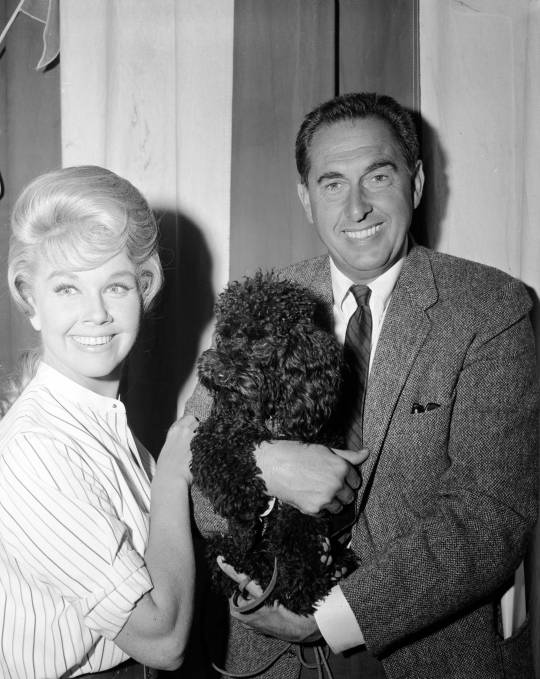
In 1937, Doris Day’s coonhound Tiny was hit by a car and killed. The guilt Day felt for Tiny’s untimely demise would fuel her activism on behalf of animals. Day transitioned from acting in the 1970s to become an animal welfare advocate. She co-founded the non-profit organization Actors and Others for Animals in 1971. In 1978, she started the Doris Day Pet Foundation (later renamed the Doris Day Animal Foundation). This organization advocates for the humane treatment of animals. By the late 1980s, she would allow only a handful of interviews with the sole intention of publicizing her charitable efforts. She even called up President Ronald Reagan, her costar in THE WINNING TEAM (’52), to discuss animal rights legislation. In 1987, she started The Doris Day Animal League, which eventually merged with The Humane Society of the United Sates, and established World Spay Day. In 2011, she started the Doris Day Horse Rescue and Adoption Center, and Day recorded the album “My Heart,” the proceeds of which went to her non-profit. Day was awarded the Presidential Medal of Freedom by George W. Bush in 2004 for her work.
Jane Fonda
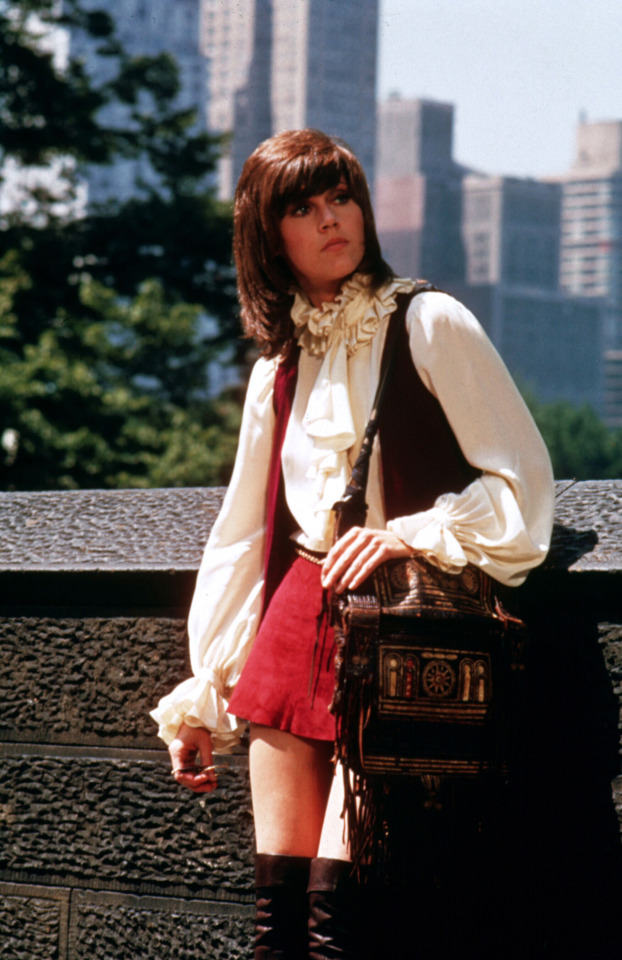
Outspoken political activist Jane Fonda has championed many causes over the years. She was a vocal opponent of the Vietnam War, which landed her in some hot water. In 1970, while Fonda was organizing and fundraising a protest with Vietnam War veterans, she was arrested for possession of drugs. The drugs were in fact vitamins and she was eventually cleared of all charges. In a moment of defiance, she held up a fist for her now iconic mugshot. Two years later, Fonda would travel to Vietnam and a photo of her sitting on an anti-aircraft gun in Hanoi would stir up controversy. She was labeled “Hanoi Jane,” a moniker that is still negatively used against her to this day. While she regretted her actions, she did not let this prevent her from continuing her political activism. She’s been a champion for civil rights, feminist causes and has lent her support to Native Americans. In recent years, she’s taken on several environmental causes including protesting the Dakota Access Pipeline and Arctic drilling. As of the publication of this article, Fonda has been arrested five times for her climate change demonstrations (Fire Drill Fridays) in Washington D.C.
Audrey Hepburn

During her childhood, Audrey Hepburn suffered the effects of living through WWII and the Dutch famine of 1944-1945, which would have long lasting effects on her health. In 1946, early ambassadors from the newly created organization UNICEF (United Nations Children’s Fund) offered her assistance. She never forgot their kindness and her own personal experience led to her to become a champion for children in need. Hepburn began working with UNICEF in 1954 and started traveling on field missions in 1988. The following year she was appointed as a Goodwill Ambassador for the organization. She traveled to Turkey, Bangladesh, Vietnam, Thailand, Venezuela, Ecuador, Guatemala, Honduras, El Salvador and elsewhere, assisting with medical treatments, nutrition projects and working directly with children and their mothers. Her last trip was to Somalia in 1992, four months before she died. In 1993, she was posthumously awarded the Jean Hersholt Humanitarian Academy Award.
Helen Hayes

Actress Helen Hayes was best known for her theatrical productions, but when her severe asthma put an end to her stage career (the dust on stage proved to be too much), she transitioned to television and film. Hayes used her fame to help raise funds for asthma research. She also donated to the arts, including the Riverside Shakespeare company. She was on the board of her directors for the New York Chapter of the Girl Scouts in the 1970s. Besides being an EGOT (an Emmy, Grammy, Oscar and Tony-winning performer), her greatest claim to fame should be her work with the New York State Rehabilitation and Research Hospital which helps rehabilitate patients with disabilities. Hayes first became involved with the hospital in the 1940s. Throughout the years, she donated, fundraised and hosted events at her mansion, the “Pretty Penny,” and offered support in any way she could. She lobbied for funding to renovate the hospital, a project that cost over $37 million dollars. She served as a member of the board from 1944 until her death in 1993. The hospital was renamed The Helen Hayes Hospital in 1974 and is still going strong today.
Lena Horne

Lena Horne’s activism began at a very young age. In 1919, at the age of two, she appeared on the cover of the NAACP journal The Crisis. Influenced by her grandmother Cora Calhoun Horne, a suffragist and activist who was a political ally of W.E.B. Du Bois, as well as her activist father, Horne championed civil rights before the movement ever began. She joined the NAACP while she was still a high school student. She also leant her support to the Urban League, the Progressive Citizens of America and the SNCC. During WWII, Horne supported the war effort by entertaining black troops. She filed a complaint through the NAACP when she saw that black service members had to sit behind German POWs during her performances at Fort Reilly. When MGM removed her from the tour, she self-financed her trips and continued her efforts. During WWII, she also spoke up on behalf of the mistreatment of Japanese Americans. Horne campaigned for anti-lynching legislation with Eleanor Roosevelt, although that ultimately failed. During the Civil Rights Movement, Horne performed at rallies and was in the March on Washington in 1963. In 1983, the NAACP awarded her the Spingarn Medal for being an “artist humanitarian and living symbol of excellence. Her humanitarian efforts live on and the annual Lena Horne Prize, awarded by Town Hall, honors artists for their social impact.
Marsha Hunt

The name Marsha Hunt should become synonymous with activism. Hunt has been indefatigable in her humanitarian efforts. Influenced by her progressive mother, she became a liberated woman with strong political beliefs. Those beliefs would come under scrutiny during the McCarthy Era witch hunt. She joined the Committee for the First Amendment, a group of Hollywood actors and writers who supported the Hollywood Ten. She was ultimately blacklisted. Over the years, she became an advocate for UNICEF, The March of Dimes, The Red Cross and the United Nations. She was named an Ambassador for Peace in 2007. Hunt has championed many humanitarian causes including homelessness, mental health, world peace, the environment and the plight of refugees. She is a founder of the San Fernando Valley Mayor’s Fund for the Homeless. Hunt helped raise money to buy a motel that was renovated into a homeless shelter for women and children. She supported the shelter throughout the years by donating supplies and helping with the upkeep. Hunt has also been a vocal advocate for the LGBTQ community. Back in the 1970s, she wrote a song about same-sex relationships called “Here’s to All Love,” and it was performed by Glee star Bill A. Jones in 2013. A documentary about her life, career and humanitarian efforts MARSHA HUNT’S SWEET ADVERSITY was released in 2015.
Mary Pickford

Actress, producer, writer and business woman, Mary Pickford was an enterprising woman and instrumental in the formative years of the film industry. In 1921, she conceived of the idea for the Motion Picture Relief Fund, an organization intended to help other members of the film industry who had fallen on hard times. She used the remaining funds from her work selling Liberty Bonds during WWI to help finance the project. Pickford became one of the founding members of what is now called the Motion Picture Television Fund. She also served as the organization’s first vice president. She oversaw various initiatives including the Playroll Pledge Program, which encouraged industry members to donate 0.5% of their paycheck to the fund. She helped raise money to buy walnut and orange groves in Woodland Hills, which would become the home for the fund and its hospital. Pickford was on the board for many years and attended every fundraising event she could. In addition to the MPTF, she established the Mary Pickford Foundation in the 1950s. The foundation focuses on preserving films in partnerships with film archives.
Rosalind Russell

Ever since Rosalind Russell portrayed Sister Elizabeth Kenny, an Australian nurse who took great strides to help children suffering from polio in the film SISTER KENNY (’46), Russell became a tireless advocate for various health causes. Russell, who suffered from rheumatoid arthritis, served on the National Commission on Arthritis and Related Musculoskeletal Diseases starting in the 1970s. The Rosalind Russell Medical Research Center for Arthritis University of California San Francisco was named in her honor. She was a founding member of the United Service Organizations (USO) and the League for Crippled Children. She was a chairman and advocate for The Lighthouse for the Blind, Catholic Charities of New York, The National Arthritis Foundation, Children Services of Connecticut and the MPTF. Russell lent her efforts to senior care centers and in assisting tornado victims. For her numerous philanthropic pursuits, she received a Jean Hersholt Humanitarian Academy Award in 1973.
Elizabeth Taylor
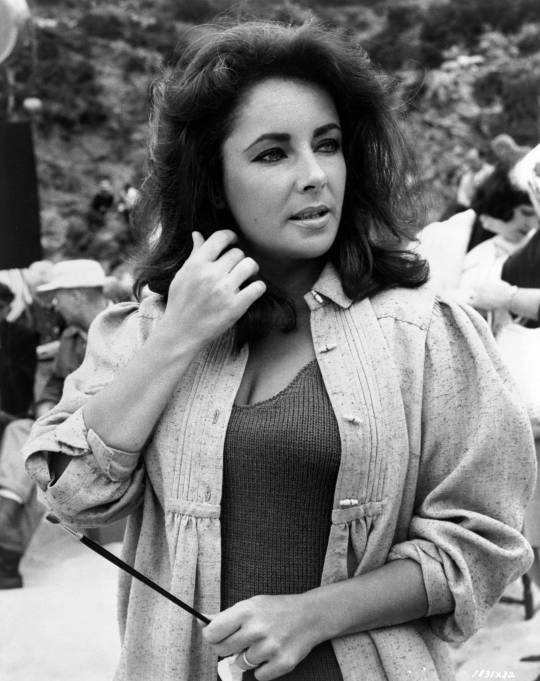
When her good friend and co-star in GIANT (’56), Rock Hudson, died from complications of AIDS, Elizabeth Taylor was devastated. Fueled by the tragedy, she became a tireless advocate for those suffering from HIV/AIDS. She helped raise awareness, fund research and combat ignorance in a time when AIDS was still highly misunderstood. She testified before the House and the Senate for the Ryan White Care Act and helped convince President Ronal Reagan to publicly acknowledge the disease. She also founded the Elizabeth Taylor Medical Center at the Whitman-Walker Clinic in D.C. which offered free HIV/AIDS testing. In 1985, she chaired the AIDS Project Los Angeles’ Commitment to Life fundraising project and co-founded the American Foundation for AIDS Research. The Elizabeth Taylor AIDS Foundation, established in 1991, provides financial and moral support to patients suffering from AIDS. She shifted her focus from acting to her humanitarian efforts and raised millions of dollars for different foundations. After her death in 2011, her estate keeps funding her foundation. Taylor was awarded a Jean Hersholt Humanitarian Academy Award in 1993.
#International Women's Day#IWD2020#female activists#actress#classics movies#old hollywood#TCM#Turner classic movies#Elizabeth Taylor#Lena Horne#Marsha Hunt#Rosalind Russell#Audrey Hepburn#Doris Day
2K notes
·
View notes
Text
Talentswap-DR1 Kids with V3 Talents
So I came across a post made by @mythgirlimagines who gave some headcanons that featured the kids from the first game with talents from the V3 game. I really enjoyed the idea and I began to think of my own headcanons for each kid and how their lives would be different with their new talents. So with their permission, I was able to come up with this. I hope you like it!
Sayaka Maizono as the SHSL Adventurer
As a kid, she spent all her time at home since her dad was always working and her mom passed away.
She found comfort in watching TV programs that showcased different countries and cities and loved seeing the people having fun together.
Wanting to find happiness like those people, Sayaka began to secretly wander around her home city and partook in sight seeing and trying new foods.
She also practiced interacting with the people and asking them different questions.
After getting enough practice, she began traveling around different parts of Japan before making her way through the Asian countries followed by the rest of the globe.
She vlogs her travels by uploading pictures and videos of the food, fashion and festivals in each place she visits.
The popularity of her vlogs has resulted in her gaining contracts with multiple tourist companies who want her to visit their cities to boost tourism.
Mukuro Ikusaba as the SHSL Pianist
Mukuro doesn’t really care about playing the piano. She only took it up because her sister insisted that she do something useful with her life
She spent most of her freetime practicing the piano and would perform for hours on end to see how far she could go before exhausting herself.
She’s won multiple awards and critical acclaim for her performances but they mean nothing to her if they didn’t come from her sister.
When Junko decided to become SHSL Despair, Mukuro began to channel her talent to her sister’s instruction.
Her music can manipulate the emotional states of anyone listening to her and increase it based on the melodies she performs.
Ex. A somber tune can make people into sobbing messes while an aggressive song can make listeners become hostile and violent towards each other.
Junko would use her sister’s talent to either influence new followers or to dispose of unlucky victims.
She mainly wears a slim black dress when she performs on stage.
Leon Kuwata as the SHSL Tennis Player
Just like in canon, Leon doesn’t like his talent. Particularly the heavy training that’s involved.
He mainly uses his tennis player image to become a celebrity.
This involves staging photo sessions with him posing in his tennis uniform or performing cool moves for the camera.
He mainly performs solo and the few times that he partakes in a doubles match is if his partner can boost his image.
This has resulted in him getting into arguments with them because of his lazy nature.
He ended up in multiple flings with various fangirls which tarnished his image as a celebrity.
His wardrobe consists of a white polo shirt with orange stripes, shorts and a red sweatband.
Chihiro Fujisaki as the SHSL Maid/Butler
(As to avoid potential discourse, I’m going to gloss over their backstory and headcanon them as genderfluid)
They find cleaning and organizing rooms to be mentally relaxing.
They take pleasure knowing that a clean house or room will become much refreshing and comforting to their client(s).
Most people are surprised that someone as small and fragile like them is capable of doing multiple chores and duties in a single day.
They prefer to work behind the scenes or with as few people watching over them.
Chihiro often has difficulties when it comes to making public announcements to large groups.
Some days they dress up in maid uniforms while other days they dress up as a butler.
Their specialty when it comes to cooking is making perfect creme brulee.
Mondo Oowada as the SHSL Artist
As a professional artist, Mondo can make a variety of artworks.
His area of specialties include sculptures and murals.
Despite making tons of money with his artworks, he secretly dislikes the rich people who buy his pieces due to their snooty personalities.
He initially hated his talent because he was hoping to be good at something that was more manly or cooler.
His big brother was the reason for why he became an artist to begin with.
Having been Mondo’s main parental figure their whole lives, Daiya wanted to ensure that his brother would have a secure career that he could be proud of and that he wouldn’t have to risk his life for. Just like he does as a gang leader.
After his inevitable death, Mondo took his art career more seriously to honor his big brother.
He wears cargo pants with a white tank top and has a paint splattered bandanna around his neck.
Kiyotaka Ishimaru as the SHSL Aikido Master
He took up aikido believing it to be an ideal practice of mastering self control
He devotes most of his freetime to studying the different forms of aikido aswell as the religious aspects tied to the skill.
At his old school(s) he became popular for taking down various delinquents who would terrorize his defenseless classmates. But what really moved everyone was how Kiyotaka invited each delinquent to join him so that they can master self control and change their lives for the better.
He ended up becoming the president of a large club dedicated to aikido.
Despite his popularity, Kiyotaka is still very awkward at friend making as all he can discuss is his general studies and aikido.
All of his relations with his peers are purely professional.
Hifumi Yamada as the SHSL Anthropologist
He started out by watching foreign cartoons and dramas and wondered how different they were compared to the ones shown in Japan.
This led to him binge watching multiple foreign shows while taking notes and analyzing the cultural norms displayed in each show.
His hard work paid off when he landed a spot on a TV show where he showcased his research and the popularity for each show in their respective country.
He does most of his research in his hometown but sometimes he’ll travel to specific cities either to showcase new research or to analyze a TV show/movie production.
He dreams of being remembered as a hero who was able to connect every culture and bring world harmony.
He often reaches out to Sayaka in the hopes that they could do a travel collab together but she politely denies his requests using various reasons.
Celestia Ludenberg as the SHSL Inventor
She uses a steampunk lolita ensemble whenever she makes public appearances and speaks with a Victorian accent.
She’s able to maintain her composure when she’s in an environment with an exceptionally hot temperature.
Celestia takes pride in being able to take apart the most mundane of household appliances and rebuild them into something better and praiseworthy.
Several companies have already commissioned her to make service drones.
She’s willing to make any invention that’s requested provided that the client can afford her extravagant prices.
There’s rumors that she’s been secretly making inventions that can brainwash people and turn them into her obedient servants.
She’s openly expressed interest in studying Kyoko’s existence but the robot makes it clear that she doesn’t want to be involved.
Sakura Oogami as the SHSL Entomologist
While she underwent extreme training thanks to her family’s profession, she has caused conflict among them for refusing to continue the fighting legacy in favor of her true passion.
She’s earned the nickname “The Mountain Woman” on account of how she’s always spotted hanging out in the mountain range studying bug life.
Sakura earned publicity by researching every individual insect found in Japan and how they interact with one another in their ecosystem.
Sometimes she allows the more dangerous insects and arachnids to bite/sting her so she can develop an endurance towards their toxins.
She also does environmental activism by stopping companies from illegally destroying the forests.
In her spare time, she enjoys meditating in the middle of the woods or by waterfalls.
Aoi sometimes asks if Sakura could lend her some of her butterflies for her magic shows.
Junko Enoshima as the SHSL Supreme Leader
She’s a cult leader. Plain and simple.
Using her analytical talent, Junko can analyze any person who’s unfortunate enough to talk to her.
By lending her ears, she gives them the impression of a person who genuinely cares about them and their problems no matter how pathetic they may be.
Most of the people who are drawn to her are often poor unfortunate souls who have been hurt by society or loved ones.
Wanting to fight boredom, she used her initial members for manipulation games and mental torture to see how powerful her charismatic personality can be.
She uses her findings to establish herself as a prominent figure of the 21st century.
A figure that can guarantee dramatic change if her subjects are willing to follow her commands.
When she decides to become the SHSL Despair, she uses an alternate persona via Monokuma to broadcast messages of despair and hard truths to the listening audiences.
And to keep Hope’s Peak and the police from catching on about her plans, she makes it so that she runs an exclusive club for intellectual and high class individuals.
Makoto Naegi as the SHSL Astronaut
Despite being average, he wanted to show everyone that it’s possible to accomplish the extraordinary even if you’re ordinary.
He loved the idea of going to space and seeing the beauty of the stars and the Earth down below.
Ever since middle school, he’s been training his body so he can be prepared for space travel.
He’s studied different star systems but he has difficulties when it comes to mechanical engineering and repair.
The closest he’s been to space was traveling in ships that reach high enough for him to experience zero gravity.
Despite being the youngest member of the space program, all the staff members adore him for his bright personality and his eagerness when it comes to completing missions.
In his free time, he tries to learn English and Russian should he be assigned to work with astronauts of the US or Russia.
Kyoko Kirigiri as the SHSL Robot
Her creator was her grandfather Fuhito who wanted an heir for his engineering business.
Her design was modeled after his young granddaughter who had died alongside her mother.
Having familiarized herself with the ongoing grudge between Fuhito and Jin, Kyoko can’t help but wonder if her creation was born out of spite.
She’s willing to follow along with her grandfather’s wishes but she does question if her actions are because she was programmed to follow them or because she herself wants to do it.
She’s built with a titanium body armor that can endure any extreme forms of damage along with providing her with super strength.
Given the right resources, she can also hack any computer system and gain access to any information found in said system.
Jin had conflicting feelings about allowing Kyoko to enter Hope’s Peak due to her bringing up feelings of anguish for his lost daughter and needed to be pushed by his dad to accept her.
She prefers to stay in the background analyzing the actions and behaviors of her classmates but she will show no hesitation in using force to resolve potential conflicts.
Byakuya Togami as the SHSL Cosplayer
In this reality, he lost his chance of becoming the Togami Heir and was banished from the family.
He still wanted to make a name for himself and decided to pursue a career that no one in his family would cross paths with him in: cosplaying.
Initially, he was depressed for a month after losing his big chance and immersed himself in anime shows to drown out his depression.
In a way, he found inspiration by watching the protagonists who continued onward and decided to make new paths for themselves despite failing to achieve their initial dreams.
If he wanted to be like them, then he could try dressing like them.
He only watches anime that has an enriching fantasy setting or has historical themes
Using what was left of his money, he funded a public fashion show that displayed the elaborate costumes of famous anime characters.
He became a big hit and was given sponsorships to produce more cosplays.
He has a love/hate relationship with his talent. On one hand, he prides himself in being the best at cosplaying. But on the other, he hates it because it’s a reminder that he lost his right to be a Togami.
Touko Fukawa as the SHSL Detective
Having grown up reading mystery novels, Touko became familiar with the cliches and expected tropes found in each given mystery.
Before going freelance, she served as a secretary for a private detective.
When looking over his cases, she pointed out the familiar patterns for each case while explaining her reasonings behind her deductions. She ended up being right 9 times out of 10.
The PI decided to give her simple cases that involved family drama and cheating spouses to test and expand her knowledge.
Eventually she would be hired for more extreme cases involving drug rings and murder.
Because of her abusive childhood and upbringing, Touko still has Dissociative Identity Disorder and created Genocider Syo as a coping mechanism to protect her.
But rather than killing people like a cliche yandere, Syo shows up whenever Touko ends up cornered or captured by dangerous criminals.
While she has no idea what gloomy got herself into, Syo has no issue with thrashing the low lives who would threaten her existence.
This has often led to the criminals becoming seriously injured or even being killed as a result. When it comes to the latter, Syo takes special care to ensure that it looked like an accident or that the criminal died by someone else’s hand.
This unfortunately resulted in Touko having a bad reputation as a loose cannon detective.
The detective decided to cut ties with Touko to maintain his business but ensured to tell her that she has what it takes to be a true detective.
She still thinks badly of others and is quick to point out the negative qualities associated with that person.
Yasuhiro Hagakure as the SHSL Assassin
The reason he got into assassination was to own up for his mistakes.
When he was 13, his gambling habit led to him and his mother losing their house and having to live on the streets.
Wanting her son to learn responsibility, Hiroko called in an old friend who had ties with the local yakuza and requested that he give her son a job.
Unbeknownst to the two, the only job that the friend could offer was being an assassin. And wanting to make his mom proud of her boy, Yasuhiro accepted the job without telling Hiroko.
After years of brutal and life threatening training, Yasuhiro became the clan’s go-to hitman and was handsomely rewarded every time he successfully got rid of a clan enemy or someone who couldn’t pay their debts.
His preferences for killing involve drugging the victims with slow but lethal poisons or attacking them when they’re alone. His appearance requires him to be extra cunning as to avoid being detected.
Eventually he was caught by the authorities but was contacted by Hope’s Peak who learned about his unusual career.
He was given two choices: he could go to jail for his murder or he could attend HP so that his talent could be studied while also receiving the school’s protection. Even a moron like Yasuhiro knew what choice to take.
When he went to tell his mom the good news, he found that she disappeared without a trace. Some say that Hiroko left out of shame when she found out about her son’s crimes, others believe that she was kidnapped and killed by revenge driven enemies. Regardless of the rumors, Yasuhiro has a gut feeling that she’s still out there and he intends to find her to make things right.
He uses the SHSL Fortune Teller title to keep his assassin career a secret.
He still maintains his carefree and ditzy personality both because no one would ever expect him of being a professional killer and so that he can keep pushing forward in life without falling into complete despair.
His baggy clothing and dreadlocks make it easy for him to hide knives or bottles of poison.
Aoi Asahina as the SHSL Magician
Ever since she was a little girl, Aoi loved everything about magic.
She read different types of fairy tales and myths so she can learn more about it and use them for her shows.
When she first started, she would perform tricks for her brother Yuta and would ask for his input regarding each performance and how she could improve herself.
Her costume is based on the classic witches mixed with a magical girl theme. (Think along the lines of Little Witch Academia).
Her magic shows put alot of emphasis on spectacle and enchantment so the people watching could fall in love with the concept of magic.
When she has the time, she bakes her own special donuts and offers them to a certain number of lucky participants.
Despite her friends and family encouraging her to participate in competitions, Aoi doesn’t feel that it would be right to use her magic tricks to compete for publicity.
She wants her magic shows to be an inspirational thing that brings happiness and wonder to the people watching.
She enjoys performing for children and often performs at schools, hospitals and orphanages.
The trick she’s best at performing is the underwater escape challenge.
#danganronpa#dangan ronpa#talentswap#sayaka maizono#mukuro ikusaba#leon kuwata#chihiro fujisaki#mondo oowada#kiyotaka ishimaru#hifumi yamada#celestia ludenberg#sakura oogami#junko enoshima#makoto naegi#kyoko kirigiri#byakuya togami#touko fukawa#yasuhiro hagakure#aoi asahina
188 notes
·
View notes
Text
Lauren Greenfield



Girl Culture, Lauren Greenfield



Generational Wealth, Lauren Greenfield
Lauren Greenfield is a phenomenal photographer who is well known for her exhibitions. She was born on June 28th, 1966 in Boston, however she grew up in Los Angeles. In 1987, she graduated from Harvard with a Bachelor’s of Arts degree in visual and environmental studies. After graduating, she worked as a photojournalist based in Los Angeles and London, publishing multiple works in famous magazines, such as National Geographic, Vanity Fair, and the New York Times Magazine. Over time, she has received many awards for her work. She was awarded ICP’s Young Photographer Infinity Award, along with the National Geographic Society Documentary Grant, and a National Foundation for Advancement in the Arts Award as well. Her work has been featured in many museums around the world, such as the Art Institute of Chicago, Los Angeles County Museum of Art (LACMA), the J. Paul Getty Museum, the San Francisco Museum of Modern Art (SFMOMA), Smithsonian, the International Center of Photography, the Center for Creative Photography, and the Museum of Fine Arts in Houston, Texas. She is mostly known for her THIN, Fast Forward, Girl Culture, and Generational Wealth projects. Out of all of her projects, Girl Culture and Generational Wealth stand out to me the most.
Lauren Greenfield’s photography exhibition named Girl Culture is a collection of photos that show how some girls in today’s day and age primarily use their body as a huge form of identity expression. The photos have an array of girls who differ in age, weight, skin color, and many other things, however they all have the same idea that their body is a large part of their individuality. Each photograph explores the relationship between girls' lives and emotional development in the material world and popular culture. In my opinion, Lauren Greenfield couldn’t have done a better job with this project. As you look through the photos, the point in which she is trying to get across is very evident. You see photos of girls looking at themselves in mirrors trying to figure out how to make themselves look better, or little girls playing dress up with makeup to make themselves feel grown up, or a large group of women in bikinis showing off their bodies. I understand what it feels like to compare what you look like to others, almost wishing you looked like something completely different. As a female, it hits you right exactly where I imagine Lauren Greenfield wanted it to.
In another one of her other projects, Generational Wealth, it visualizes today’s generation and its obsession with wealth. It documents how we as people value materialism, celebrity culture, and or social status all around the world. Lauren Greenfield spent years photographing for this exhibition while travelling to many parts of the globe, to show how we all are alike when it comes to such. She travelled to places such as Los Angeles, Bel-Air, Monaco, Moscow, Dubai, China, and many more. The idea of the project itself isn’t about being rich, but instead, it’s about the desire to be rich and have the luxuries that most do not, which I think at some point all of us can relate to at some point in our lives. I believe this exhibition in particular was a great thing to present to society because it kind of gets you to step back and realize our thoughts or even behaviors when it comes to this subject.
Between Lauren Greenfield’s Girl Culture and Generational Wealth, the two have a lot of things in common because they both have a lot to do with peoples’ opinion of themselves socially and materialistically. Besides story wise, they are similar because the subject in both exhibitions for most of the photos are females. I believe she chose to do this because in society I think that these kinds of things, such as wealth, status, or looks, mean more to girls than they would to men. Therefore, the subject matter for these projects were pretty spot on in my opinion. The way she photographs makes her seem like a fly on the wall. None of her photos are staged to where she told her subject to pose or look a certain way, they’re more documentary than they are narrative, which I think proves her points even more because they are truthful in what they show.
Works Cited :
International Center of Photography. “Lauren Greenfield.” ICP.org, ICP, https://www.icp.org/browse/archive/constituents/lauren-greenfield?all/all/all/all/0
Institute Artist. “Girl Culture.” InstituteArtist.com, Institute Artist, https://www.instituteartist.com/filter/lauren-greenfield-exhibition/exhibition-Girl-Culture-Lauren-Greenfield
Lauren Greenfield. “Generational Wealth.” Generational-Wealth.com, https://www.generation-wealth.com/
2 notes
·
View notes
Text
Liverpool’s Metro Mayor Candidates 2021: All you need to Know.

Tomorrow, on Thursday the 6th of May, the Liverpolitan people will be travelling in droves to their nearest polling station to vote on the future of the Liverpool City Region.
Yes, the 2021 Local Elections are almost upon us and the residents of Liverpool, Sefton, Knowsley, Wirral, St. Helens and Halton boroughs will all be able to vote for the councillors who they want to see represent them in their local ward. This year, Liverpolitans will also be provided with a ballot that will allow them to vote for their preferred candidate for the region’s metro mayor.
The metro mayor was a role first established in 2016 under the Cities and Local Government Devolution Act and is a title that has only ever been held by Labour’s Steve Rotherham since 2017. Now while the Liverpool Metro Mayor does not hold the same powers as a First Minister or the Mayor of London, they do have a number of important roles vital to the cities development. The Metro Mayor is responsible for uniting Liverpool’s six boroughs and encouraging them to work collectively to better Liverpool’s economic and political position. Furthermore, the Metro Mayor has a duty, to the best of their ability, to attract investment and economic prosperity across the region. They also hold certain powers, such as the management of cross-borough services, like public transport. Hence, while they are limited in what they can do in comparison to other devolved positions, the metro mayor is instrumental for our region’s future development, whether that be economical, environmental or political.
This blog is intended to provide information on the Metro Mayor candidates to help voters make a more informed decision on who they want to see as the face and voice of the Liverpool City Region. Note: I do not intend to influence how the reader will vote, but I will be asserting my own opinions on the candidates, their policies, and the parties they represent. Furthermore, the policy information included has been taken from an LCR Mayoral Election 2021 guide in order to help readers gain a better perspective of the candidates.
Jade Marsden (Conservative Party)

Now being a Conservative candidate in Liverpool already puts Marsden at a significant setback. There has and still remains a long held stigma against the Tories dating back to Margaret Thatcher, as captured in the sentiment that “Scousers Hate Tories”. Though while one would seek to disregard Marsden from the get go, I must please ask you to hear what she has to offer to Liverpool before jumping to a conclusion.
Mrs. Marsden is a current resident of South Liverpool and formerly stood as the parliamentary candidates for both Bootle and Sefton Central respectively. According the Sefton Central Conservatives, Marsden’s “wealth” of experience of local politics would be beneficial in her ability to be a strong “Fresh Voice” for the Liverpool City Region.
Marsden strongly believes that it has been under Labour’s leadership that the LCR has been let down. As a result, we have missed out on key investment, transport improvements and well-paid jobs. Thus, the LCR needs a vision that delivers for future generations, offers a solution to air pollution and secures jobs and future investment. Marsden intends to offer this to Liverpool.
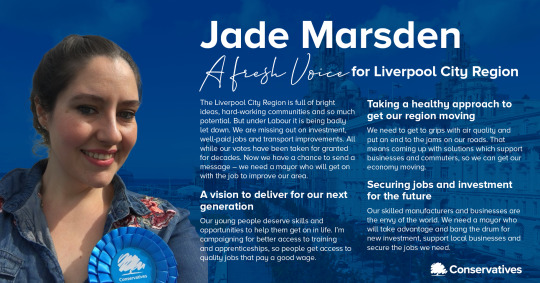
Is a Blue Liverpool the way forward?
Marsden, if victorious, intends to cooperate with Westminster to “get things done”. If she was to be elected, she would:
Not charge the Metro Mayoral Precept, part of the council tax that funds city region-wide services that the Metro Mayor is responsible for.
Ensure spending is widespread and not just focused on central Liverpool.
Lobby the government to make the region an urban national park to protect Liverpolitan green spaces and the coastline.
Work to end homelessness as we recover from the pandemic, as well as improve social housing that contains dangerous living conditions.
Improve regional transport connections.
Attract new investment to help out small businesses and the high street, in order to ensure that local people have good quality jobs.
Now while this may sound ideal, I do hold certain critiques of Marsden’s policy agenda.
First of all, the Mayoral Precept, as mentioned, is responsible for funding city region-wide services. Not charging it may allow tax payers to keep more money in their pocket, a possible benefit due to the impact of the pandemic. However, a cut to the Mayoral Precept will come at a cost for local services. Public transport, for instance, would lose out on funding as a result. This somewhat contradicts her pledge to improve regional transport connections.
Secondly, while the “urban national park” label may sound good on the surface, I cannot help but think this would put the LCR at a setback. Liverpool has beautiful natural scenery, the likes of Thurstaston Beach or Sefton Park is proof of this. Liverpool thrives on its green spaces. These spaces should be protected under law. However, I believe an “urban national park” status will put the city at a disadvantage. It is not clear whether Marsden’s urban national park intends to prevent development on disused docks in Liverpool or Birkenhead. Furthermore, there are well needed transport connections that would be vital for moving cargo to or from the Port of Liverpool. Liverpool’s urban development and economic prosperity cannot be jeopardised if Marsden seeks to attract new investment and create new jobs.
Yet there are key issues that I do agree with Marsden on. While the Liverpool name is the regional “brand”, investment has been too focused on central Liverpool. The city centre is thriving while town centres in Bootle, Birkenhead, Widnes, etc. are awaiting significant investment. However, Rotherham has only been in office for 4 years. Given time, he too could secure funding for locations beyond Liverpool City Centre.

Other things to Remember:
Above, I have chosen to insert an image of Southport town centre. Southport in the 2019 General Election was the only Liverpolitan constituency to vote Conservative, represented by MP Damien Moore since 2017.
Recently, Southport was awarded £37.5 Million in government funding to help in regenerating the town. This was one of the largest town deals that the government has agreed to. This money would allow the town to invest in existing attractions and all-weather attractions across the seafront, as well as attract new businesses to the area. It is believed that the masterplan will create 1,000 new jobs and it is predicted that Southport will enjoy a 1 Million increase in visitors per year.
This goes to show that there may be possible perks of having a Conservative representative for the region at a time where the Tory’s dominate Westminster. This may be something worth considering when casting your vote tomorrow. A vote for Marsden, may be a vote for an increase in Liverpool’s funding.
David Newman (Liberal Democrats Party)
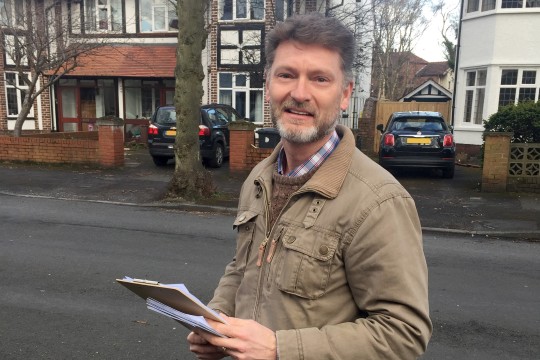
Until recently, Southport local David Newman was not supposed to be the Lib Dem candidate for the Metro Mayor role. Newman “stepped forward” after the former candidate, Wirral councillor Andy Corkhill, was forced to withdraw because of his serious battle with cancer.
Newman understands that unlike other city region residents, he and his partner are fortunate to have a young family, work, own his own home and live a happy, healthy life. He identifies that others in our region are being left behind and he seeks to offer Liverpolitans a way to “Step Forward”.
Newman is offering voters to join him in creating real leadership in Liverpool and providing a real direction. Newman also seeks to tackle the climate emergency, fix the region’s broken transport system and provide hope for businesses effected by the Covid-19 Pandemic.

Are you ready to Step Forward?
Like all residents of the city region, Newman is aware of how our region has been tarnished by the actions of the city’s ‘political bosses’. It is the next Metro Mayor’s job to repair the damaged reputation caused by a handful of greedy politicians and ‘cowboy’ developers. Newman seeks to ‘clean up’ local politics and ensure that he is held accountable to the citizens of Liverpool.
Newman seeks to ensure that our region is welcoming, ensuring that all investments are ethical. He also seeks to launch a green recovery plan to tackle the current climate crisis. This would help in fixing the city’s reputation that Labour predecessors exploited for their own ends.
Newman also seeks to ensure no one in Liverpool, Sefton, Wirral, Knowsley, St. Helens or Halton are left behind. To do so, Newman intends to launch the UK’s first trial of Universal Basic Income (UBI) to put an end to the poverty that has plagued local communities. Newman also seeks to open up Liverpool to European and Global investment so that the city can once again be placed at the ‘Heart of the Globe’.
So what are Newman’s policies? For the purpose of this, I have divided his policies into four categories: Post Covid-19 Recovery, The Climate Emergency, Transport; A Global Region.
Post Covid-19 Recovery

Newman intends to deliver a new economic deal to create jobs, allow businesses to thrive and help out those in our community who have been left behind. He seeks to do this by:
Trialling UBI in Liverpool. Newman wishes to initiate a scheme that would make it so citizens would no longer have to rely on government welfare or the goodwill of landlords. Having UBI would make it so money is no longer an issue, it would allow people to learn new skills and bring an end to regional poverty.
Reinventing the High Street by introducing a number of services that people want and need, this includes child care and an expansion of hospitality.
Creating new jobs and allow for residents to develop new skills and undergo new training.
Supporting Small Businesses and the Self-Employed by fighting for a rent relief fund for small businesses in debt and relief payments for self-employed without property.
The Climate Emergency
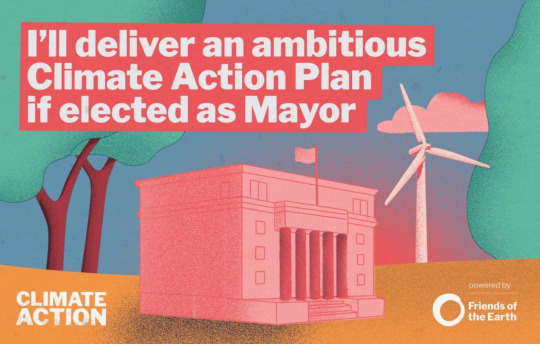
Newman believes that Liverpool has an opportunity to become a beacon for national and international governments on how to tackle the climate emergency. He seeks to do this by:
Creating a Green Recovery Plan which would ensure that all infrastructure plans and investments are in line with what is needed to address the climate emergency. Newman also intends to create a clear carbon budget and carbon reduction pathway.
Ensuring that all parks and green spaces across the region are legally protected to prevent future development on the land.
Investing in Clean, Renewable Energy by advancing tidal power and investing into more wind farms.
Ensuring the Port of Liverpool in Net Zero Carbon by finding a suitable, sustainable way of moving freight (not by road) and advocating for the halting of the importation of industrial-scale North American biomass.
Transport

Newman wishes to make regional public transport more accessible by reducing ticket fairs and increasing services to locations currently underserved. His transport ideas also go hand in hand with his desire for tackling the climate emergency. Newman would improve transport by:
Fixing the broken bus network and delivering on Steve Rotherham’s failed promise to introduce Bus Franchising. As well as Introduce more flexible season passes and tickets so journey’s that involve more than one bus are easier to make.
Improving the Merseyrail network by reopening lines that currently lack passenger services, building new station and making existing ones more accessible to disabled passengers. Newman also intends to push for further electrification of the local rail network and reuse the Wapping Tunnel to give Merseyrail access to the City Line.
Investing into more cycle paths and walking opportunities.
A Global Region

Newman seeks to cooperate with European and International partners to allow Liverpool to be a major player on the world stage. Newman intends to:
Work with Greater Manchester and Stormont to create embassies in European and Global cities to assist with the development of trade, industry, university links, etc.
Encourage London- based High Commissions and Embassies to create Honorary Ambassadors to Liverpool.
Work with our international football clubs and use events like the Grand National and Southport Open to showcase the region and seek new opportunities.
I must say, Newman has a lot of policies. The question is, can he realistically deliver them? Trialling UBI, further electrification of the rail network; building tidal and wind energy farms, etc. are all very costly projects. It is possible that Newman will struggle to accomplish his ideas given the financial restraint placed upon the city region.
Furthermore, his global city policies tend to be very Eurocentric, describing Liverpool as a “proud European region”. The Lib Dems should know by now that alienating Brexiteers tends not to work out very well for them. I believe that there should be a focus not simply on Brussels, but also on countries beyond Europe, such as Canada, the U.S.A., Japan, Australia, New Zealand, etc.
However, despite this, I am quite fond of Newman and what he stands for. I was particularly excited those for his transport policies as I for a long time have advocated for the reopening of the likes of the Wapping tunnel. It felt good to know that a metro mayor candidate shared this interest in disused lines. If you wish to read more of his policies, please visit: https://www.davidnewman.org.uk/
Gary Cargill (Green Party)

Actor Gary Cargill, known for his roles in Hollyoaks (2010-11,2013) and Peterloo (2018), is standing to be a Green Mayor (”For Everyone”) in the LCR. Cargill, Liverpool born and Runcorn raised, seeks to ‘turn the city region green’ and ‘inspire real long lasting change’.
His policies centre on the current climate emergency, thus prioritising environmental policies and protecting the most vulnerable suffering in our communities.
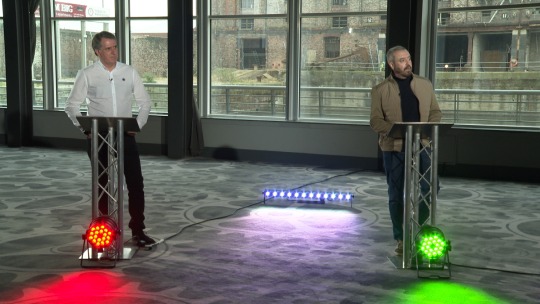
As a Green Mayor, Cargill promises the Liverpolitan people that he will:
Create new skilled jobs in Green Energy and Technology.
Build a clean, affordable transport system.
Invest in developing skills and training for young people.
Protect green spaces for future generations.
Establish a ‘People’s Assembly’ to ensure the Metro Mayor is completely accountable.
While all this sounds pretty generic and similar to previous candidates, Cargill goes a step further. Unlike his adversaries, Cargill discusses what he would do for each borough individually. This admittedly impressed me as he seems not to be focused on Liverpool collectively.
#GARY4HALTON - Cargill promises to push for an improved City Region-wide air monitoring system, particularly around sources of pollution.
#GARY4KNOWSLEY - Cargill wants to put Knowsley borough back on the map by making sure that local towns receive a fair share of regional investment and support.
#GARY4LIVERPOOL - Cargill will work towards having more safer and accessible walking and cycling networks. He also wants to develop cheaper and cleaner public transport.
#GARY4SEFTON - Cargill promises to protect Sefton’s green spaces from development and road building. He also wants to invest into more renewable energy along the Sefton coast, a valuable resource for wind a solar.
#GARY4ST.HELENS - Cargill wants to make sure that the Green Belt in St. Helens is protected. He wishes to stop local councils from building warehouses in Haydock, Bold and Newton which risk “destroying our natural environment”.
GARY4WIRRAL - Cargill insists that due to the climate emergency, the Liverpool region’s economic growth is not as important and cannot remain constant. However, Cargill wants to take advantage of regeneration opportunities, like Wirral Waters, to invest in a circular economy that provides Green Jobs in renewable energy and housing.

It is clear that Cargill, as expected from a Green candidate, is passionate about the Liverpool region’s environment. Of all of his ideas, my favourite is his idea for making use of the Sefton coastline’s valuable resources for solar and wind energy.
However, I personally I see more flaws in Cargill’s policies than I see sensible ideas. Cargill has made clear that the climate emergency is the number one priority for Liverpool, even our regional economy is expendable for the sake of the environment. Environmental issues are undoubtedly important, but how does Cargill hope to fund his policies if he is willing to sacrifice Liverpool’s economic recovery?
This was also reinforced during his debate with Steve Rotherham where he openly condemned Liverpool’s free port status as a “Thatcherite race to the bottom”. Despite the opportunities for job creation and investment the free port could bring to Liverpool, he wishes to scrap it. As Rotherham commented, without this status, industries and opportunities will be exported to the North East. Liverpool cannot afford to pass up on investments like the Free Port.
From what I can gather, based on the policies I have seen and his appearance on the Granada Reports debate, the Greens are too one policy focused. This could be extremely detrimental for our region. Yet I could be biased, is a ‘Green Mayor’ the way forward?
Steve Rotherham (Labour Party)
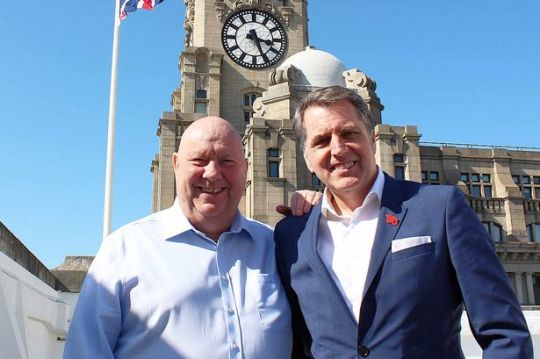
The final candidate running for the Metro Mayor position is none other than Steve Rotherham who, tomorrow, is up for re-election.
Having held the metro mayor title since 2017, Rotherham promises to ensure that if he was to be elected once again, there will be ‘No One Left Behind’. Rotherham promises that he will ‘stand up for everyone’ across the Liverpool region, but how has his track record been so far?
During his time as metro mayor:
Liverpool (pre-Covid) became the fastest growing economy in the UK. Rotherham also points out his management to attain another £232 Million to fund transport, skills and tackling homelessness.
Public Transport saw Improvement. Northern’s stripped franchise aside, during Rotherham’s time as mayor, Merseyrail opened its first station in 20 years and claimed to have taken steps to take control of the region’s buses and rail infrastructure.
Young People were Helped. £48 Million was invested into upgrading school/college facilities.
He ‘Fought Injustice’ through spending £8 million to develop a Housing First pilot to tackle homelessness. He also supported 1,300 families into work.
He lowered the toll for the Mersey tunnels to the lowest it has ever been.

Was this enough for a first term? I argue no.
In terms of transport, the new Merseyrail Class-777 trains are yet to appear on our lines. Whether or not their launch has been delayed due to Covid-19 or not, the metro mayor should have already launched the service to prove his commitment to a “London Style Transport System”. Furthermore, only opening one Merseyrail station in your first term is not an achievement. Maghull North was opened to the public in 2018, yet it took Rotherham until 2020 (his last year in office) to begin working on Headbolt Lane? I also have heard little about the supposed reopening of St. James Street. I don’t think this is good enough.
Also, as Newman pointed out, Rotherham has completely failed to deliver improved and nationalised bus services. In fact we are now “9 months behind Manchester” according to Rotherham himself. To put it simply, he failed to deliver on his promise that will Liverpool will be the first city outside of London to have a nationalised transport infrastructure. In fact, he has allowed Liverpool’s closest rival, Manchester, to get ahead in the fight for better public transport.
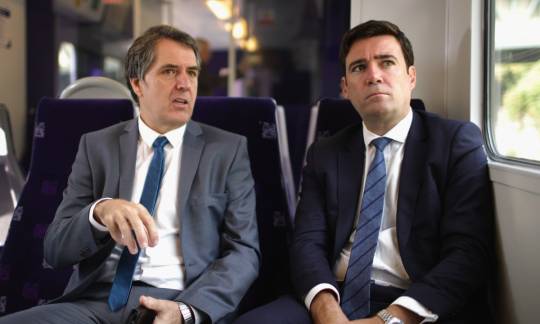
Speaking of Manchester, in 2020 the Republic of Ireland declared it would be opening a consulate in the North in order to “Strengthen our Bonds”. The contenders for this consulate were Liverpool and Manchester. You would think that Liverpool, given its history and much closer association with the Irish people would be chosen for the consulate. Yet, this is not what happened. Rotherham allowed, with seemingly little fight, for the consulate to go to our neighbour. One could argue that Andy Burnham has become the Mayor of Manchester and Liverpool.
How has he allowed for Liverpool to be outcompeted by our closest rival?
Now onto his response to Covid-19...
Rotherham claimed that during 2020, he took on Boris Johnson and Westminster to win more money to funding for testing, vaccinations and furlough. Though, I would have to argue that it was Andy Burnham who stood up for the people of the North. Rotherham was in fact nowhere to be seen. His track record is definitely something to be made aware of when voting for Metro Mayor.
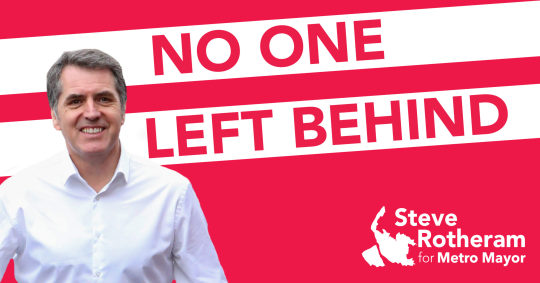
No One Left Behind
However, while he may not be the ideal candidate based on his track record, it is still worth considering his policies before casting a final decision.
Rotherham, if re-elected, has promised to deliver:
A £150 million Covid Recovery Fund, double the number of Green Jobs and would work towards a more locally controlled London-style transport network.
A Guarantee to Young People that a job, apprenticeship or training opportunities will be made available for all school leavers within 6 months of becoming unemployed.
Greater control of the transport system with the new trains coming into service and tap-in tap-out ticketing being introduced. Rotherham also promises a cycle revolution.
A Green New Deal that will ensure that Liverpool leads the Green Industrial Revolution. He will double the number of green jobs, harness the power of the Mersey (invest into renewable energy) and ensure our region is on track to be net zero by 2040.
A Digitally Connected Region, achieved through the deliverance of ultrafast broadband infrastructure across the entire region. This would make Liverpool the most connected region in the country.
Now Rotherham does have some good policies. The question is can he deliver them?
However, it should be noted that Rotherham may not have to worry about re-election. As a twitter user put it, ‘Hitler could be a labour mayor and win’. The Liverpool region, despite years of neglect and being overlooked, is a Labour stronghold. This gives Rotherham a boost in his effort to be re-elected.
Closing Thoughts
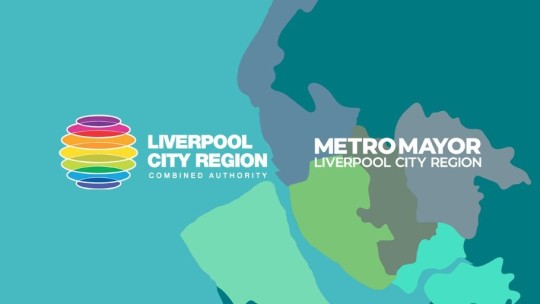
I hope this article has allowed you to understand all the candidates in greater depth. The Metro Mayor is an important figure for our region and we must ensure that the right person gets the job. So, make sure you find the time to go out and vote tomorrow!
Best of luck to all the candidates!
#liverpolitics#politics#thenorth#northernpolitics#liverpool city region#metromayor#localelections2021#liverpool#wirral#sefton#st. helens#halton#knowsley#labour#conservative#libdem#liberal democrats#green party#jade marsden#david newman#gary cargill#steve rotherham
2 notes
·
View notes
Text
Ten Innovators to Watch in 2021
https://sciencespies.com/nature/ten-innovators-to-watch-in-2021/
Ten Innovators to Watch in 2021
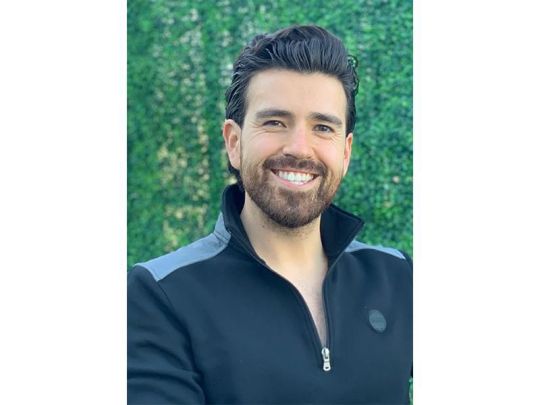
This past year left us with no shortage of incredible innovations, chief among them Covid-19 vaccines. Following a harrowing 2020, we’re excited to see how innovators continue to push the envelope and bring forth what they think the world needs. From celebrating and honoring black history to improving the mental health of K-12 students, we’re keeping our eyes on these ten groundbreakers as they share their visions with the world.
Chicken-less Egg Connoisseur Arturo Elizondo

Arturo Elizondo
(Clara Foods)
“Like any good Mexican, I had two eggs for breakfast every morning, and like any good Texan I had my barbeque every Sunday,” says Arturo Elizondo. But when he learned about the devastating impacts that livestock has on the environment, he set out to find a better, more sustainable way to produce animal protein. In 2014, he co-founded Clara Foods with cell biologist David Anchel with a mission to take animals out of animal proteins.
Similar to how brewers use yeast to convert sugar into alcohol for beer, Clara Foods uses yeast and sugar to produce animal protein. Specifically, Elizondo and his team are working to produce egg proteins—one of the most challenging to find alternatives for. One trillion eggs are consumed across the globe each year, but it takes a whopping 600 gallons of water to produce a dozen eggs, he says. Since they’re so versatile and globally loved, Clara Foods is offering a cleaner alternative so that people can still enjoy eggs in all their culinary forms without the tremendous environmental impact.
Clara Foods has been knee-deep in research and development for the last six years, but the company is officially coming out of their “eggshell” in 2021 when they launch the world’s first egg protein made without a chicken, Elizondo says.
Problem-Solving Wunderkind Gitanjali Rao

Gitanjali Rao
(Gitanjali Rao)
As a 15-year-old, Gitanjali Rao is the youngest innovator on our list, but she’s certainly one to watch. She’s already tackling some of the greatest problems affecting current generations: lack of access to clean water, opioid addiction and cyberbullying.
After hearing about the water crisis in Flint, Michigan, Rao was shocked to learn that people in the United States and beyond still don’t have access to safe, clean water. In response, she invented Tethys—a sensor that can detect lead in water and upload results from the water sample to an app, allowing users to quickly and affordably see if water is safe to drink. She’s also worked to address the opioid crisis by developing Epione, a way to diagnose prescription opioid addictions for patients at the onset of addiction, after hearing about a family friend who developed an addiction after a car accident. And to address cyberbullying—a problem especially relevant to her age group—Rao developed Kindly, an artificial intelligence-powered software that detects hurtful or harmful messages and then prompts users to rephrase what they send. Her thoughtful, problem-solving innovations earned her the title of TIME’s 2020 Kid of the Year.
“My motivation to solve problems in society started in a very simple manner: to solve problems that we face on a daily basis,” she says. “I try my best to understand them and look for ways to address them. I am not always successful, but the few times [I’ve succeeded,] I feel like I have contributed in some way.”
To inspire others to innovate, Rao has connected with about 35,000 students across four continents and has more events planned in the coming months. As she moves forward in 2021, Rao says she has more ideas in the works and that she’ll continue developing her current innovations as she searches for the partners to help her out.
Storytelling Composer Barron Ryan

Barron Ryan
(Daniel Charles Folkers)
On May 31, 1921, a mob of white residents attacked the Greenwood District, a predominantly black neighborhood, in Tulsa, Oklahoma, in what’s known as the Tulsa Race Massacre. The attack—one of the worst acts of racial violence in American history—continued through the next day as the mob killed more than 300 black Tulsans, displaced 10,000 others and burned more than 35 city blocks to the ground.
To commemorate the 100-year anniversary of the Tulsa Race Massacre, Chamber Music Tulsa commissioned composer and performer Barron Ryan to tell the story of the tragedy through a piano trio. As a Tulsa native, Ryan says that it’s important for him to tell this story—a story that needs to be remembered. “It’s an integral part of who I am, and I’m honored to do it,” he says.
“Music can tell a story without using words, [and it] has an unparalleled ability to communicate” Ryan says, which is what he aspires to do with his trio. In composing the piece, he looked through firsthand accounts of the massacre. He read about a woman who hid with her daughter and read psalms as the attack raged on. Psalm 88:3 spoke to Ryan, and it ultimately inspired the melody. One of the verses reads, “My soul is full of troubles,” which Ryan borrowed as the title of his trio.
He hopes that his music inspires people to reflect on the Tulsa Race Massacre and to be courageous—to do what’s right and not simply what is easy, he says. “I’m hoping that it’s well received, and that we remember our history as Tulsans and learn the right lessons and not repeat something like this again.”
Transit Trailblazer Andrea Ponti
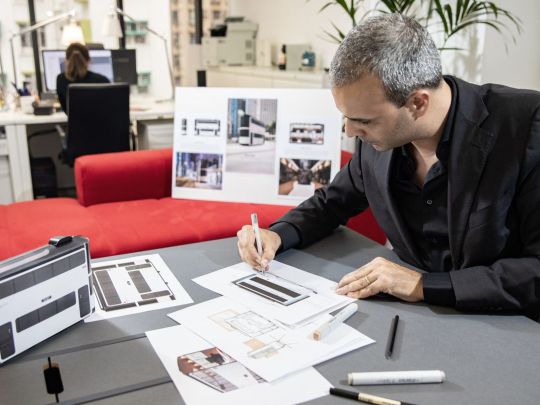
Andrea Ponti
(Andrea Ponti)
The Covid-19 pandemic brought public transportation to a screeching halt as people who had the means to travel in their own private vehicles opted to do so. Andrea Ponti, the founder and director of Ponti Design Studio, took the opportunity to re-think and re-plan how we get around. Inspired by social distancing, he developed Island, an electric tram designed for a post-pandemic Hong Kong, the city where he resides.
“When the pandemic took over Hong Kong, many people turned to private transport causing a dramatic increase in traffic, pollution and noise,” he says. “What makes Island attractive is that it helps to solve all those problems. The bottom line is technology needs good design in order to be efficient and accessible to most people, and I think Island might be an example of that.”
Instead of sitting in rows, the tram’s seats are organized in circles, or “islands,” seating people with their backs towards each other so they can look out the window instead of facing others. “To me that is a safer way to commute and a fun way to take in the city sights and see Hong Kong from a different viewpoint,” he says. Plus, the tram is electric and driverless, making it eco-friendlier and more efficient.
“As a designer I really like the challenge of re-imagining products and services that we often take for granted and that can be greatly impacted by social changes—in this case re-designing trams at the time of social distancing in a metropolis like Hong Kong where social distancing is hard to practice,” he says.
Ponti started developing Island in March 2020 and has since modeled the tram and produced a number of prototypes. Moving forward in 2021, he is working to scale the protypes, move into the testing phase and secure a partner to produce Island.
Honoring Black History with Anitra Belle Henderson

Anitra Belle Henderson
(Lemaris Alston)
In 1860, a plantation owner smuggled in a shipload of 110 African people to Alabama on the Clotilda, the last known slave ship to arrive in the United States, decades after the U.S. had banned the importation of enslaved people. When enslaved people were freed in 1865, survivors of the Clotilda couldn’t afford to return to Africa, so they founded Africatown instead, a bustling town rooted in their homelands and cultures.
After years of searching for the long-lost Clotilda, a team of historians and archaeologists finally discovered it at the bottom of Alabama’s Mobile River in 2019. Now, the City of Mobile will open a heritage house in the summer of 2021 to tell the story of the Clotilda‘s survivors and of Africatown.
“We are excited to help the community tell their story,” says Anitra Belle Henderson, the executive director of communications and external affairs for the City of Mobile and the lead on all the Africatown projects. “Our goal is for visitors to understand more about those who were enslaved. They have a name and a story.”
The heritage house is designed to be an immersive experience. Visitors will feel the waves of the ocean like the enslaved people felt on their voyage, read stories of the slave trade and be introduced to the survivors of the Clotilda. They’ll also be able to visit Africatown, where many descendants of the Clotilda‘s survivors still reside.
“Each detail of the heritage house was designed with reverence to the ancestors, descendants and the community,” Belle Henderson says. “Those who are curious about African culture can visit an African community on American soil—a community that was built with hope and promise.”
“The many stories show the diverse brilliance of black people,” she says. “Since the [discovery] of the Clotilda there has been a new excitement in the community. Educating people about Africatown’s past will definitely create a bright future for a community that so deserves the attention it is receiving.”
Nautical Visionary Brett Phaneuf

Brett Phaneuf
(IBM)
In April 2021, the Mayflower Autonomous Ship, one of the world’s first full-sized self-navigating ships, will set sail from the United Kingdom’s Plymouth Harbor and traverse the Atlantic Ocean to Cape Cod, Massachusetts. It will retrace the voyage made by the original Mayflower in 1620 that brought Pilgrims to New England, but instead of looking back at 400 years of history, it represents what the next wave of nautical advances will look like.
The Mayflower Autonomous Ship is a collaboration between the marine research organization ProMare and IBM, which developed the ship’s artificial intelligence systems that will allow it to navigate unassisted across the ocean. The Mayflower team is hoping to revolutionize ocean research by creating an affordable option for scientists to study the ocean without necessarily being on board a ship. Without needing to worry about the logistics for housing people on board, like sleeping, eating and sanitation, the ship can accommodate more technology, like cameras and sensors, and stay out at sea longer.
“If it works as designed, then it will substantially drive down the cost of collecting data at sea,” says Phaneuf, a co-founder and co-director of the Mayflower Autonomous Ship project. “This will lead to [a] better understanding of our oceans and climate.”
Phaneuf’s biggest hope for the Mayflower is that it makes it across the ocean and sparks the conversation about how autonomous ships can be used to study the high seas. During this first voyage, the ship will collect meteorological and oceanographic data as well as water samples to study microplastic distribution.
Student Advocate Samantha Pratt
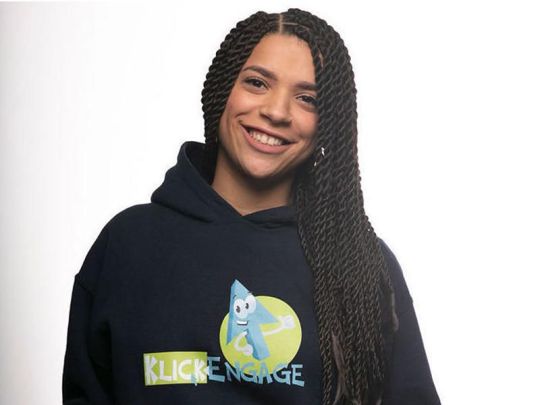
Samantha Pratt
(Samantha Pratt)
Two thirds of all U.S. youth face at least one trauma by age 16 that can stem from poverty, racism, domestic or community violence, or substance abuse, says Samantha Pratt, the CEO and founder of KlickEngage.
“Students carry heavy emotional backpacks into the classroom every day that they cannot put down,” she says. “I was teaching high-need students in an overcrowded classroom and could not check in with each of my students every day in order to address their issues. Out of urgent need, I decided that I had to find a way to streamline student self-report.”
To do so, Pratt designed KlickEngage—an app that allows users to self-report their mental state each day by completing a two-minute survey. The app, which has reached thousands of kids,then provides students with targeted coping mechanisms while delivering real-time data to educators so that they can identify and supports students carrying heavy emotional loads, Pratt says. Schools have the ability to make a huge impact for students by providing health services and resources, but they’re often limited and underfunded.
“By directly serving students, teachers and schools, we limit the impacts of adverse experiences on school engagement in early years of education so that there is a higher likelihood of student success in later years, breaking the cycle of trauma and poverty,” Pratt says.
Students are still facing adversities, plus the compounded issues brought on by the Covid-19 pandemic, such as unemployment, food insecurity and fear-based anxiety, Pratt says. Since KlickEngage is able to be adapted for a physical or virtual learning environment, it can help educators check in with students, even from a distance. In 2021, KlickEngage is planning to grow its impact and reach more classrooms.
Pandemic-Inspired Architects Jing Liu and Florian Idenburg

Jing Liu and Florian Idenburg
(Vincent Tullo)
In 2020, homes transformed into all-in-one offices, gyms, daycares, classrooms, vacation destinations and restaurants as people’s lives became confined to their residences. As a result, people noticed just how important their home environment is to their mental and emotional wellbeing, say Jing Liu and Florian Idenburg, the founding partners of SO–IL, an architecture and design firm.
At the outset of the Covid-19 pandemic, Liu and Idenburg were in the beginning stages of designing a new 30-unit residential building in Brooklyn. They also found themselves adjusting to living and working from home with their two daughters, and they say that experience helped shape the design for the new building, to be completed in 2022. Now that people are home all the time, Liu and Idenburg needed to create a space that was both multi-functional and comfortable for residents. For example, they moved bedrooms to opposite sides of the apartment to muffle noise and distractions, which are typically clustered together. They also incorporated multiple outdoor spaces for each unit, creating easy access to fresh air and sunshine.
The pandemic has highlighted what people really need in their homes, and architecture trends in the future will reflect that, they say. “The main lesson to take away is that the lifespan of a building will be longer than the interval between pandemics,” they say. “From a sustainability standpoint, we should endeavor to build buildings that last ‘forever.’ It means we need to design for future pandemics.”
Mosquito-Trapping Mastermind Kennyjie

Kennyjie
(Eric Lau)
When industrial designer Kennyjie (he prefers to go by just his first name) was 12 years old, he contracted dengue fever—a flu-like disease transmitted by mosquitos—while living in Indonesia. “Being able to afford long hospital care, I was one of the privileged kids who walked out alive,” he says. Mosquito-borne disease prevention has remained an issue close to his heart, and it’s the driving force behind his new innovation, Quito.
While visiting Bali, Kennyjie noticed that the mosquito prevention tactics were inconvenient and ineffective, so he set out to design his own. Quito, which made the International Top 20 for the James Dyson Award in 2020, uses a simple chemical reaction to produce carbon dioxide and an artificial human odor to attract mosquitoes, and then it vacuums them into a chamber. By luring mosquitoes in instead of repelling them, Quito reduces their local population and the chance of disease transmission. It’s designed to be placed in tropical resorts to lessen the likelihood of an outbreak as people travel in and out of the region.
Kennyjie traveled through multiple Indonesian villages to ensure that Quito’s design is informed by the local culture, economy and climate so that it fits into the “geographical context in which it is needed,” he says. This year, Kennyjie will continue running more tests from his home in Melbourne, Australia, until international borders are open and he can start pilot tests in Indonesia.
#Nature
1 note
·
View note
Text
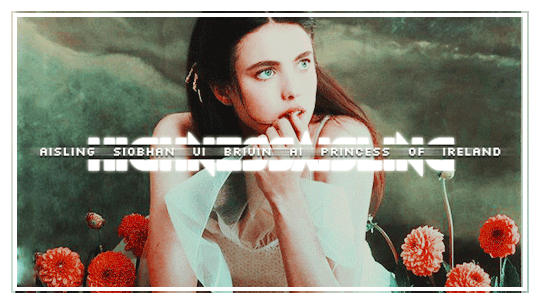
&&. announcing her royal highness, ( aisling siobhán uí briúin ai ), the ( 24 ) year old princess of ireland. she is often confused with ( margaret qualley ). some say that she is ( meddlesome and reckless ), but she is actually ( adventurous and passionate ).
Hey my name is Plume and I’m very excited to be here ! Let me introduce my beautiful daughter ! It is midnight here so forgive any spelling mistakes. I’m just so thrilled that I wanted to post a little something before bed. I will definitely have a bio/about page very soon. But for now, this little thing will have to do.
Aisling is the youngest and only daughter of King Cian and Queen Abaigeal. She has an older brother Michael. On her paternal side, she has an aunt Katherine who married Lethabo king of Zimbabwe and two cousins Reginald and Nylane Zulu.
She is an environmental activist. She runs the Irish crown’s green foundation and has ties with several other NGOs. She is mostly involved in cleaner oceans and beaches and animals preservation.
She has a degree in Marine Science from NUI Galway.
After her bachelor, she spent almost a year on a boat sailing across the globe for a scientific mission
She does not have the best relationship with her abusive father (I mean who would ?). He doesn’t support her life choices and her activism. Her mother wished to have a socialite daughter and Aisling does not really play that part so they don’t connect much. Thankfully she has Michael. Her brother is her rock and her protector.
The princess used to spend a lot of time in their Connemara Ballynahinch castle with her grandparents. She had a more loving relationship with them than with her parents.
It’s there in the middle of the beautiful nature that her vocation to fight for the environment was born.
She became a vegetarian at the age of 14. She has now taken a harder stance on that diet and only eats dairy, or eggs if they come from her estates or ethical places. When in doubt about the origin of the food, she goes vegan.
She used to ride horses but stopped because she thinks it is slaving the animals. It is also why she does not own a pet.
However she still plays hurling. It is not ladylike but her father pushed her to practice that traditional irish sport. She actually loves it. It made her competitive and was a great way to channel her aggressiveness.
She is reckless and likes anything that can give her a thrill.
She was linked to multiple men throughout the years. Due to her opinionated and passionate nature, she hasn’t had a steady and long relationship. She rarely can stay with someone if they don’t share her views or can keep up with her.
She is the opposite of a snob and honestly can not deal with half of the pretentious royals. She will like you for who you are and not your title.
She is very opinionated and will fight you.
She can talk smack about you in gaelic/irish but will gladly do it in english.
She scuba-dives, snorkels and surfs.
Adores the sea/ocean and was probably a mermaid in another life.
She knows the basic about sailing.
She only wears cruelty free makeup and upcycled or recycled clothes. She is involved in the fashion environmental shift.
She tries to reduce her family carbon footprint but without much result. It is hard to give up jet or planes for safety and practical reason. She did made some progress with electric cars and solar panels. She personally tries to take public transportation most of the time ( security nightmare) and is mindful of the way she travels.
Outside of the environment, she is not involved much in politics. She does care about global politics and some internal affairs like the Nothern Ireland conflict. She thinks that Ireland should be united and that the British should relinquish Ulster.
She fully supports her brother and father’s stance against England.
However she is not cunning or plotting. She is pretty blunt, upfront and easy to read. It makes her for an easy opponent and not a great player in the power games that take place in their world.
Absolutely will never agree to an arranged marriage unless it would be the only way to save Michael’s life or get Northern Ireland back.
She is well perceived by the people of Ireland and actually beloved by the youth who align on her environmental strong stance.
She arrived in Thailand 2 weeks ago. While in Phuket she works with local NGOs and Phuket Marine Biological Centre to clean beaches, protect the sea life and fauna. She is mainly involved with leatherback sea turtles and marine life in Sirinat National Park.
Some wanted connections
cliché bodyguard princess plot
best friend taken by margotstuart
blank space.mp3 (she has a long list of ex lovers and i can write your muse’s name on it)
other activists
ocean lover (or our own mermaid/merman club)
reckless budy : someone to do climbing, diving, surfing, and all sorts of adventurous things with
someone who has a crush on Aisling
the frenemy: They don’t really hate each others. They could resent each others over something ridiculous. Perhaps they’re just not vibing. Either way, they kind of throw shades at each others and be petty when they see each others but nothing too extreme.
disastrous on and off again boyfriend: very messy and constantly breaking up to get back together months or years later. they just can’t make it work
someone who tries to use Ailsing for political gain or manipulate her
all kind of friends : old ones, unlikely ones, recent ones,...
#i will add more tomorrow#but i wanted to post something so you could have an idea of who my daughter is#hshqintro
12 notes
·
View notes
Text
World War Z Review!

World War Z: An Oral History of the Zombie War By Max Brooks Zombie/Science Fiction Novel Broadway Paperback, 2006
Rating: 1/5 Waves

Content Warnings for World War Z: Violence, Gore, Body Horror, Rape/Sexual Assault (non-explicit), Death, Self-harm, Suicide, Suicide Ideation, Racism, Slurs/Derogatory Language, Sexism (misogyny and internalized misogyny)
This review CONTAINS spoilers for World War Z: An Oral History of the Zombie War.
Plot Summary: Ten years after the culmination of the greatest conflict in human history, an interviewer for the United Nations has traveled the globe collecting stories about survival, loss and heroism. These interviews outline the complete history of World War Z: what happened, why it happened and how the world was rebuilt. The world survived, but at what cost?
Before we get started, you should know I am not a zombie connoisseur. In fact, zombies are probably my least favorite of the Science Fiction/Fantasy (SFF) monsters. Sure, I know the concepts and basic rules of zombies like most American media consumers, but I never cared for the concept. Even during the boom of Zombie/End of the World/Dystopian fiction that flooded the market in the 00’s and 10’s, I couldn’t get behind the genre. Why? Mostly because zombies were scary and I am a wimp, but it’s critically important for you to know that my negative feelings regarding the zombie genre are not why I gave this book such a bad review. The zombies were honestly my favorite part. The problem I had with this book was the humans.

To say this book is all bad would be an outright lie; the premise itself was enough to invoke more than a passing interest. World War Z is written as a collection of interviews from people who survived the zombie war and so it is essentially a series of short stories that all take place in the same world and illuminate different sides of this fictional global conflict. Most zombie media, in my experience, is incredibly American-centric so when this book opens with Dr. Kwang Jingshu, the Chinese doctor who identified Patient Zero, it sparked my interest. World War Z does such a great job making sure the reader remembers that there is a great wide world out there and that the zombie apocalypse is coming for everyone. We get perspectives that I had never even considered like from the astronauts at the International Space Station. This book also does a great job of keeping the story moving. Max Brooks did excellent work because even though each interview is its own independent story, the stories further the narrative in essential and creative ways. No one’s story feels extraneous and they flow together which is no easy feat for a book containing over 42 independent short stories.
I also loved the implicit hope ingrained in the very structure of the book. Each of the characters that are interviewed have survived the zombie war, for better or for worse. Most other zombie media that I have seen gets its tension off of the ‘Will They Survive?’ question hanging over each character’s head; but World War Z guarantees that at least the narrator of each chapter is alive at the end of the war, so the author has to be more creative with how he builds and releases tension. There is a level of creativity and imagination that really makes the world stand out from all of the other zombie apocalypse media that I have seen.
One obvious manifestation of this creativity is the zombies themselves-- which are clearly zombies that the American consciousness recognizes-- with a few fun twists that keep the imagination engaged. When an author wants to take a well known SSF monster, like zombies or werewolves or vampires, and make them their own, they walk a very fine line: if they are not careful, the audience will not recognize the monsters. Max Brooks did great in making the zombies a recognizable threat that the average reader can make correct assumptions about, while also surprising us in ways that make sense within the logic of the story. For example, these zombies can walk under water until their decomposition gasses cause them to float. That is a fun twist that allows the author to create terrifying images of people trying to swim to safety and being pulled under the water and never surfacing, or of zombies climbing ship anchors in the dead of night. Very scary. I love it.
So why in the world did I give this book my lowest possible rating? It’s the people. This book is composed of 57 interviews from 42 unique characters and not a single one was likeable. Nearly ever character utilizes racist or derogatory language to the point that I learned new derogatory words. I shudder to think what my search history looks like from an outside perspective. The book does a good job of showing that just because you survive doesn’t mean you are a good person, but it almost goes out of its way to show that you have to be (or at least become over time) a terrible person to overcome this type of hardship. The humans in this book are at times orders of magnitude more terrifying than the zombies.
There are, of course, a few characters that the author was very clearly trying to make sympathetic, and it would have worked if the character’s internal monologues had not turned their derogatory language inward. Instead of cursing other races or genders or religions, these characters made a point to remind the audience that they were lazy or stupid or fat or useless, and that they honestly believed they should have died (and some more than considered suicide as an option). Unfortunately, for me these were the characters that were most relatable as far as their character background. It was exhausting. It was demoralizing. It was bullshit. Average people, without military training and without a bloodthirsty drive to kill, kill, kill, have their own strengths and can be the heroes of their own story. Not in this book, though.
Finally, and probably the biggest reason this book is rated so poorly is the treatment of the women narrators. The first time we hear from a woman narrator is page 91 of this 420-page book. There are 42 unique narrators in this book, yet less than 10 are women. I understand 2006 was a very different time but even if I forgive the severe lack of representation, I can’t forgive the stories that centered around these women which vary from ‘yikes!’ to ‘Jesus Christ why would you do that?’ Two of the women end up ‘crazy’, either feral or prone to delusions and hallucinations. One ends up essentially a prisoner in a baby factory, doomed to spend the rest of her life producing as many children as she can before she dies. Most of these narrators also show pretty clear internalized misogyny that remains unchallenged and in some cases reinforced. And those are just the women narrators. It is clear throughout the narrative that women across the world were harshly abused during the zombie war. Yet, unlike some of the environmental and governmental messages which came back at that end and showed how the world was fixing itself, the sexism is never addressed. With how much thought clearly went into this book, how the women characters are treated sends a clear and toxic message.

Tldr; With cool zombies, and a creative premise I cannot tell you how much I wanted to like this book, but it was highly offensive and left me feeling exhausted by the end. I cannot honestly recommend this book to anyone.
~TideMod
#tidemod#wht!#wehavethoughts!#book review#media review#zombies#post-apocalyptic#dystopian#world war z#review blog#apocalypse
5 notes
·
View notes
Text
Report lifts lid on Australia’s international bug superhighway

A new report has identified an international ‘bug superhighway’ capable of carrying a large variety of environmentally destructive overseas insects into Australia.
The study, led by the Monash University School of Biological Sciences, rated the environmental harm being caused by 100 of the worst overseas insect species and recommends a range of actions to keep them out of Australia.
The most dominant group of invasive insects by far are the hymenopteran insects — ants, bees and wasps — making them the world’s most environmentally harmful invasive insect species.
“Our report found that environmentally harmful bugs, beetles, ants and moths are most likely to hitch a ride into Australia along an international bug superhighway made up of imported plants, nursery material and the timber trade,” said report author Professor Melodie McGeoch from the Monash School of Biological Sciences.
“Australia is already grappling with large, destructive infestations of invasive insects,” she said. “It can’t afford any more.”
The report identifies the international trade in cut flowers and foliage as a high-risk pathway for more than 70 of the species studied.
Invasive Species Council CEO Andrew Cox said this is the first time Australian and international scientists have comprehensively analyzed which invasive insects overseas are doing the most environmental harm and could therefore threaten Australia’s natural environment if they breach the nation’s borders.
“Before coronavirus put the world into lockdown there were more than 50,000 merchant ships carrying goods across the globe and some 10,000 planes in the air at any one time,” he said.
“Ants, bees and wasps are habitual and versatile world travelers tiny enough to move around the world hidden in goods such as flowers and timber.
“Invasive insects can cost hundreds of millions of dollars to eradicate once they breach international borders. Queensland is already battling red fire ants through a $411 million eradication plan.
“Invasive insects can inflict massive environmental damage. Right now yellow crazy ants threaten Australia’s Wet Tropics World Heritage Area, the oldest continuously surviving tropical rainforests on Earth and the most biologically diverse region in Australia.”
The report’s 23 recommendations include:
Develop risk profiles and contingency plans for all high-risk invasive insect species.
Review biosecurity agency practices to detect and kill invasive insects as soon as they breach Australian borders.
Impose import conditions to reduce the risks of new invasive insect introductions in the country, especially via unintentional pathways such as contaminated shipping containers.
Fully implement Australia’s Invasive Ants Biosecurity Plan and establish a permanent national body to coordinate biosecurity measures on invasive ants.
Conduct a comprehensive risk and pathway assessment for other species groups such as animal and plant fungi.
Establish a national exotic and invasive species data platform that provides comprehensive, up-to-date information for risk assessments.
The Federal Government has been improving its performance in this area with the formation of the new Office of Environmental Biosecurity. The Government has recently developed an invasive ant biosecurity plan (only partly funded) and released a priority list of environmental biosecurity pests (a selection of the worst which only lists 17 insects). Much more work is needed.
Source:
https://medium.com/@jepeed1/report-lifts-lid-on-australias-international-bug-superhighway-871c09f1044b
https://phys.org/news/2020-04-lid-australia-international-bug-superhighway.html
1 note
·
View note
Text
Ten Interesting Nepali Novels
1)Palpasa Café (narayan wagle)
Palpasa Café tells the story of an artist, Drishya, during the height of the Nepalese Civil War. The novel is partly a love story of Drishya and the first generation American Nepali, Palpasa, who has returned to the land of her parents after 9/11. It is often called an anti-war novel, and describes the effects of the civil war on the Nepali countryside that Drishya travels to.
2)Unlikely Storytellers (bikash sangruala) The book focuses on a central character Deepak, a journalist and the stories are woven around the characters during the insurgency period of Nepal. The book has themes of lost childhood, love, sex, marital infidelity, war, guilt and more.
“https://publicationnepalaya.com/book/unlikely-storytellers”
3)Titled earth (manjushree thapa)
Startlingly original and closely observed stories that capture the dynamism and diversity of Nepali society in a time of great flux In Tilled Earth several compressed, poetic and deeply evocative micro-stories offer fleeting glimpses of small, private dramas of people caught midlife: an elderly woodworker loses his way in a modern Kathmandu neighbourhood; a homesick expatriate nurses a hangover; a clerk at the Ministry of Home Affairs learns to play Solitaire on the computer; a young man is drawn to politics against his better judgement; a child steals her classmate’s book . . . The longer stories in the collection, too,span a wide course, taking subjects from rural and urban Nepal as well as from the Nepali diaspora abroad. In ‘Tilled Earth’ a young woman goes to Seattle as a student, and finds herself becoming an illegal alien. ‘Love Marriage’ is an inner narration by a young man who—defying family pressure—falls in love with a woman of the wrong caste. In ‘The Buddha in the Earth-Touching Posture’, a retired secretary visits the Buddha’s birthplace, Lumbini, only to find his deepest insecurities exposed. With their unexpected, inventive forms, these stories reveal the author’s deep love of language and commitment to craft. Manjushree Thapa pushes the styles of her stories to match the distinctiveness of their content, emerging confidently as a skilled innovator and formalist.
“ https://vajrabookshop.com/categories/nepalese-fictions/products/tilled-earth”
4)While the Gods were Sleeping: A journey Through Love and Rebellion in Nepal (Elizabeth Enslin)
The Constituent Assembly of Nepal, in its very first meeting, abolished the monarchy in May 2008. After that watershed event, however, the way forward has been stalled by vexing questions. How is power in such a fractious polity to be shared? Which form of governance is best suited to the country - republicanism? federalism? How are the excesses of the decade long civil war to be reckoned? How is the People's Liberation Army to be integrated with the Nepal Army? To what extent should neighbours be allowed to interfere in the internal politics of the nation? And why is it that the Constituent Assembly, years after it was elected, cannot draft a Constitution that is acceptable to all? In The Lives We Have Lost, Manjushree Thapa asks these vital questions and many others. In seeking answers, finds the nation still muddling its way from crisis to crisis, in desperate search of a centre that will hold.
“https://vajrabookshop.com/categories/nepalese-fictions/products/the-lives-we-have-lost-essays-and-opinions-on-nepal”
5)Buddha's Orphans( samrat upadhyay)
Called “a Buddhist Chekhov” by the San Francisco Chronicle, Samrat Upadhyay’s writing has been praised by Amitav Ghosh and Suketu Mehta, and compared with the work of Akhil Sharma and Jhumpa Lahiri.
Upadhyay’s new novel, Buddha’s Orphans, uses Nepal’s political upheavals of the past century as a backdrop to the story of an orphan boy, Raja, and the girl he is fated to love, Nilu, a daughter of privilege.Their love story scandalizes both families and takes readers through time and across the globe, through the loss of and search for children, and through several generations, hinting that perhaps old bends can, in fact, be righted in future branches of a family tree.
Buddha’s Orphans is a novel permeated with the sense of how we are irreparably connected to the mothers who birthed us and of the way events of the past, even those we are ignorant of, inevitably haunt the present. But most of all it is an engrossing, unconventional love story and a seductive
and transporting read.
“https://vajrabookshop.com/categories/nepalese-fictions/products/buddhas-orphans-a-novel”
6)Blue Mimosa(parijat) Shirish ko Phool is one of the best Nepali Nobel
of Parijat. Shirish is the beautiful flower, shirish is also known as Mimosa.
Parijat originally known as Bishnu Kumari Waiwa is great Nepali Novelist who
has won prestigious Madan Puraskar for her great Nepali Novel Shirish ko Phool
in 2022. Blue Mimosa is the translated version of the novel Shirish ko Phool
which has also been adapted in the literature curriculum of some colleges in
some English-speaking countries. This program was recorded from Ujayalo FM
(Shruti sambeg ) with a very beautiful voice of Achyut Ghimire .I can't forget
to that Achyut Ghimire's contribution for his talented voice.
“https://www.goodreads.com/book/show/10579671-blue-mimosa”
7)The City Son: A Novel(Samrat Upadhyay)
In The City Son, acclaimed and award-winning author Samrat Upadhyay has crafted a spare, understated work examining a thorny subject: a scorned wife s obsession with her husband's illegitimate son.
When Didi discovers that her husband, the Masterji, has been hiding his beautiful lover and their young son Tarun in a nearby city, she takes the Masterji back into her grasp and expels his second family. Tarun s mother, heartsick and devastated, slowly begins to lose her mind, and Tarun…
“https://vajrabookshop.com/categories/nepalese-fictions”
8)Other side of the Paradise(Kenny Pandey)
Sadhu predicts the end of the world. As the East and West come together, a young boy longs to taste cheese. A monsoon thunderstorm awakens memories of a flood. A young man returns from India and encounters the New Buddha. And a hungry policeman steals some vegetables. Amidst desire, longing and the awareness of suffering, these stories ask the common question: What is the nature of existence? Why do we suffer? Can we ever fulfill the hunger of the human heart?
“https://vajrabookshop.com/categories/nepalese-fictions/products/the-end-of-the-world-a-collection-of-short-stories”
9)The Lazy Conman and Other Stories: Folktales from Nepal(Ajit Baral)
Do you not have eyes? Can’t you see that I am watering my tree?’ The merchant said, ‘But there are clothes on the branches.’ ‘Yes, I would expect a clothes-tree to grow clothes—wouldn’t you?’ Kakaji is a lazy man, much given to sitting around, until, one day, his wife kicks him out in a rage. After a series of adventures—which involve a tree that bears clothes and a dancing bear that shits silver coins—Kakaji comes home rich and resumes his…
“https://vajrabookshop.com/categories/nepalese-fictions/”
10)Summer Love(subin Bhattarai) here was crowd to see the entrance result in Central Department of Environmental Science, Kirtipur. In the notice board Atit saw the name - Saya in the number one. He did not see Saya but just her name. He was impressed by her name, and when he met the beautiful and talented Saya, he fell in love with her. And their two-years-collage-romance starts…
“https://www.goodreads.com/book/show/17371265-summer-love”
11 notes
·
View notes
Text
Off The Cuff 22/09/2019
I make this post with some anger and fading but undying hatred. I will try to keep the cussing to a minimum. It has to do with the ecology, which I’m really bothered about. Also because people always miss the bloody question and point being made.
I will start by saying this: I have great dislike for the people who fawn over Greta Thurnberg as though she were a prophet. I dislike them not because I do not care about the environment, because I do, but because the people propping her up have missed the point and are daft beyond words.
With some paraphrasing, I quote her: The solution is so simple, even a child could figure it out: Just stop producing greenhouse gases.
Truly genius. The most expedient solution then is to remove all of humanity. For do we not generate carbon dioxide by breathing? Do we not generate carbon monoxide by driving? It seems that we generate so much more than the world can take, so isn’t the solution simply to remove us from the equation?
Yes, we need to lower the production of greenhouse gases, Captain Planet, as far as I remember, has been saying that since god knows how long ago. Environmentalists were talking about that god knows how long ago, but somehow no one ever thought of that.
Remarkable.
To say that we need to remove it all is probably dramatization, but ultimately daft. It is akin to saying “take organic food for they have a little less toxins in them” when the difference is so negligible your liver laughs when comparing the toxins in your boiled cabbage with the amount of alcohol you drain. We know that there’s a limit to how far we can push the planet, but to say that we have to abandon everything? That is madness.
Yes, unsurprisingly most people know this. Even those who deny it are coming around and they know it.
The issue has always been how?
We simply do not have the technology, we simply do not have the ability, at least not in the way of going 100% “renewable” as some people keep insisting. There are times the sun doesn’t shine and the wind doesn’t blow. The ability to even store the energy produced isn’t even as great as required for such a goal. France, I believe, made an ambitious project, to make a road that would generate electricity, enough for a town or something.
Except that failed miserably and it was reported that it would have, at best, powered up a street light and a fountain maybe.
And it is because of these issues that we compromise. We reduce, we reuse, we try to recycle, even though that has been proven to be a laughable joke.
((I live in South East Asia, you of the West can take back your rubbish and recycle them for surely the first world nations should be in a better state to do so than we are.))
Yet compromise is a term people these days don’t seem to understand, which is annoying because to proceed in life, one needs to compromise. To see if there were solutions or ideas, or goals that felt realistic, I went to the website and I saw this:
The climate crisis is an emergency – we want everyone to start acting like it. We demand climate justice for everyone. Our hotter planet is already hurting millions of people. If we don’t act now to transition fairly and swiftly away from fossil fuels to 100% renewable energy for all, the injustice of the climate crisis will only get worse. We need to act right now to stop burning fossil fuels and ensure a rapid energy revolution with equity, reparations and climate justice at its heart.
What on earth does climate justice even mean?
How do you even give every one in the world, even people without access to electricity 100% renewable energy?
Let’s be realistic here, we can’t. No nation in the world can just upend everything and call it a day. It simply isn’t feasible. And what reparations? From who? To who? What does it even have to do with the climate and ecology?
Like the fool I am, I clicked the link in the words climate justice and it linked me to this site. It was ultimately a disappointment.
For example:
3. Reject Carbon Capture and Storage (CCS) and Bioenergy with Carbon Capture and Storage (BECCS) projects, and other technofixes.
... Why?
Let’s apply this every aspect of our lives shall we?
The issue with hygiene in cramped cities was solved with plumbing technology, so toilets can go. Travelling across the country or world in a decent amount of time that’s not week or months can go.
Those were technofixes. I remember reading that the US didn’t have enough trees and even if you planted trees along the whole of the US you wouldn’t have enough of it to offset the generation of carbon dioxide. If Carbon Capture and Storage tech can help, then why should it be abandoned? It is akin to being handed a glass of water when one is dying of thirst and then rejecting it because it isn’t pure springwater from the Himalayas: Foolish.
1. Transform energy systems away from corporate-controlled fossil fuels and other harmful sources such as nuclear, mega-hydro, and biofuels to a clean, safe system that empowers people and communities.
Yet nuclear technology has come some way and is considered to be pretty “clean”. Why should we not pursue that while we supplement energy generation with solar panels and windmills? And what about the dams? Do we give them up after having built them? Why not put them to use?
7. Respect and enable non-corporate, community-led climate solutions that recognize the traditional knowledge, practices, wisdom, and resilience of indigenous peoples and local communities, and protect rights over their lands and territories.
Ah yes, because somehow, someway, my grandmother knows how to stop climate change, she just kept it secret like her pork recipe. Same with the Orang Asli, I guess they have magical powers that somehow, someway magically reset the climate in ways scientists can’t figure out.
You know, much like with medicine. I guess I should listen to traditional conventions and take that bear bile because traditional knowledge, practices and wisdom will save the day.
I’m not dismissing the possibility that there are traditional practices that may lead to better agricultural practices. I’m dismissive of it because it doesn’t have anything to do with the ecology, it has all to do with the issues many societies have with indigenous people worldwide (particularly in the US it seems) and props them up as some sort of saviours of the earth when they’re not.
Quite a few of these demands don’t make any sense. Quite a few of them seem more modern day social justice word salad mixing than anything.
To quote:
6. Adopt a technology framework that recognizes the importance of endogenous and indigenous technologies and innovations in addressing climate change, and enables developing countries and communities to develop, access, and transfer environmentally sound, socially acceptable, gender responsive and equitable climate technologies.
What does gender responsive even mean here? Or anywhere?
No wonder Greta thinks no one’s ever thought to simply remove greenhouse gases, it’s because “environmentalists” like these bring up asinine points like these that have nothing to do with the ecosystems.
And this makes me mad. It makes me so very angry. There is never a “how will this affect the people?”, “how will we get there?”, there is only a “we want this this and this” and some idiots patting themselves on the back because they think that some sodding fairy would make it all work out.
It’s also why I disliked what Bill Nye did and felt tremendously disappointed. There was an ad where he burned a globe, said it was on fire and then proceeded to say, with some paraphrasing, “Of course it costs money, everything does, grow up!”
What a wonderful strawman Bill, the question wasn’t “will it cost money”, the underlying question when people point out that it costs money is “how are we going to get the money for that?”
Address the how and make it realistic, that’s where the conversation is supposed to be. That’s where the questions are.
8 notes
·
View notes
Link
Tropical cyclones aren’t as speedy as they used to be. They still spin rapidly. But they often travel at a more leisurely path down across the landscape, a new study finds.
Explainer: Hurricanes, cyclones and typhoons
Cyclones are fierce, swirling storms that form over oceans. Those in the Atlantic Ocean are called hurricanes. Today these storms move 10 percent slower, on average, than nearly 70 years ago. And that matters because as they trek across the landscape, these slowpokes can dump more rain — causing more flooding — and spend more time lashing these areas with their winds.
James Kossin works at the National Centers for Environmental Information in Madison, Wisc. It’s part of the National Oceanic and Atmospheric Administration. This scientist looked at how quickly tropical cyclones have been moving across the planet. He focused on changes between 1949 and 2016.

Tropical cyclones are getting more sluggish almost everywhere in the world. The largest drops in tropical cyclone travel time are in the western North Pacific Ocean region. CREDIT: J.P. KOSSIN ET AL/NATURE 2018, NOAA
Storms have been traveling more slowly almost everywhere, he found. But the slowdown differed by region. He found the biggest slowing in the Northern Hemisphere.
Over the same nearly 7-decade period that he studied, climate change has been warming our world. Earth’s average surface temperature has climbed by about half a degree Celsius (0.9 degree Fahrenheit).
Explainer: Global warming and the greenhouse effect
Scientists think tropical cyclones that form over warmer waters will, on average, spin faster. That translates to speedier winds. The new study suggests that climate change also is slowing the speed at which these storms cross the landscape.
Kossin shared his findings June 7, 2018 in Nature.
Trek slows most after landfall
The cyclone slowdown was especially obvious as storms moved over land. Those that started in the western North Pacific, such as near Japan, slowed by 30 percent. Those coming from the North Atlantic are moving 20 percent more slowly over land, says Kossin.
Tropical storms get pushed around by winds and air currents across the globe. Climate warming has been slowing this air movement in tropical areas. Kossin now finds that climate change also seems to be slowing down cyclones.
What also concerns scientists: Global warming could increase how much cloud water the atmosphere can hold. That means storms could collect more moisture before dumping it as rain.
Explainer: Winds and where they come from
Christina Patricola is an atmospheric scientist at Lawrence Berkeley National Laboratory in California. The new study makes an important link between the pace of tropical cyclones and the slowing winds around the planet (due to global warming), she says in a commentary about the new findings. Kossin correctly guessed, she notes, that if climate change is generally slowing down air movement, tropical cyclones also should slow.
It’s not clear whether storms will keep slowing, she notes. Right now, scientists can’t predict how cyclone slowing might vary across the planet.
One recent slowpoke was 2017’s Hurricane Harvey. It hovered over southern Texas for almost 5 full days. During this time it dumped an average of 76 centimeters (30 inches) of water across a region in which some six million people live. If you had stacked all of that water over New York City (a far smaller area), it would have reached a height of 68 meters (224 feet)! At the height of Harvey’s fury, this storm also spawned more than 30 tornadoes in Texas.
Some scientists now ask: Could such a mega-storm be a sign of things to come?
9 notes
·
View notes
Text

4. England, summer
Summary: Travel writer/photojournalist AU, slow burn, mutual pining, angst, fluff and adventures around the world.
Pairing: Alec Hardy x Hannah Baxter Rating: Mature Word count: 1.5k
Prologue | Chap. 1 | 2 | 3 | Ao3

In Covent Garden, the midday sun flared off the glass roof of the market. Hardy shielded his eyes. He hated London in the summer, hated the tourists, hated the heat, hated people playing bloody Frisbee in parks. He glared at a couple sharing an ice cream in front of him on the street, with a huff of impatience, he walked past them.
He reached the red mailbox on the street corner. He pushed a manila envelope through the slot like one rips a band-aid: quickly and holding his breath. Divorce papers, signed and sent. Time to move on. He rubbed a hand over the tightness in his chest. He knew the perfect antidote was work abroad. But until he received a new assignment, the next best thing was Stanford, the travel bookshop.
An enormous map covered the entrance floor of the shop. A memory struck him: Daisy, age six, playing hopscotch on the African countries. He smiled to himself. He would call her again tonight, even if it meant leaving another sappy voice mail. Perhaps she would want to come with him to New York in October. It would be nice to show her around. And, although he wouldn’t tell her that, he hoped she would be impressed by a whole exhibition dedicated to his work. He hoped she would understand he wanted to make the world a better place, for her.
He almost called his daughter right away, but he was in Stanford for a specific reason. Hannah had said her article on the Mahal Kita resort would be out on July 25th. “You were wrong,” she’d bragged in a text message, “they let me write everything.” He’d replied something that came out ruder than he’d intended, and he didn’t hear from her again.
As he headed towards the magazine display, he mentally composed a congratulatory message, “Let’s have drinks to celebrate”. He cringed. She wasn’t interested in him, she only wanted to have sex at the airport because she was bored.
In any case, first, he had to see this article with his own eyes. Part of him still doubted she’d gotten away with it, or had written it at all. He hoped she had. His own attempts at exposing the truth had come to nothing. Two newspapers had picked up the story only to replace it at the last minute with more pressing news. He was disappointed, but not surprised. He wasn’t giving up that easily. He still talked to Ellie and Kadek. He planned on widening the scope of his investigation by looking into other resorts owned by the same company, Group Peregrine. Meanwhile, Hannah’s article could reach readers he wouldn’t. People who directly encouraged these harmful practices in the tourism industry. She could open their eyes to the human cost of their vacations.
He spotted the latest issue of Elite Travelers. The cover featured a picture of the sea in Pulau Kesuma in oversaturated shades of blue. He baulked at the price and found a seat to read it in store instead.
The lede put him on edge right away. With each paragraph, his face grew hotter and his teeth ground harder.
He called Hannah.
“Hey, Alec! How—”
“You bloody liar.”
“What?”
“You said you would tell the truth in your article.”
“I did!”
“No, you didn’t.”
“You know what? It might not be up to your standards of exposing the truth, but it’s not that kind magazine, okay? I did what I could, but the rooms were nice, I had to say it.”
“It’s nothing but praise. Praise for criminals.”
“I get it, you’re a paragon of integrity and I’m a sham.”
“You lied to me. There isn’t a word in there about the environmental impacts or the fishermen.”
“Of course, there is. It’s right there in the lede. And there are at least three more paragraphs about it.”
“I’ve got your article right here, it says: From its unspoiled site to its respect of the environment, the Mahal Kita eco-resort is, simply put, flawless.”
Hannah fell silent. He heard her sniff, and his anger vanished.
“You okay?”
“I didn’t write that… It wasn’t me, that’s not what I wrote.”
“Seriously?”
“Keep reading.”
Hannah slouched down in the hotel armchair, closing her eyes to ward off the dizziness. Hardy kept reading the article. She recognized some of the sentences, but she’d reread the text often enough to identify the missing parts.
She was in Cornwall, covering a music festival, so she hadn’t seen the magazine yet. When Duncan hadn’t asked for revisions, she’d naively thought her article was perfect. No wonder she hadn’t heard back from him about the promotion.
“Baxter?”
“He fucking censored me… You were right.” She laughed, a hollow, bitter sound.
She expected Hardy to gloat, but his voice was gentle when he spoke again, “I really wanted to be wrong.”
He stayed on the line with her, in silence, while she struggled to make sense of this betrayal. She hated Duncan so much right now, she could have ripped his head off.
Hardy told her he’d experienced censorship too. Back when Tony Blair had sided with George W. Bush about the Iraq war. An editor had cropped one of his photographs so as to leave only the angry, armed Iraqi men in the frame and remove the children they were protecting.
“I was furious.”
“What did you do?” she asked.
“I made sure the original photo was published elsewhere.”
“I just… it was important to me, you know? It felt like a big step in my career. Something different…”
“So, what are you gonna do about it?”
“What can I do?”
“You have to get that story out there.”
She could put the uncensored article on her blog and expose Elite Travelers’ dishonesty. But could she afford to antagonize her main source of income? Adios business class and exotic resorts.
“You would want to work for them again after this?” Hardy asked.
“It had never happened before.”
“That you know of.”
The moral decision weighed on her chest, pushing a deep sigh out of her. She didn’t want to deal with this right now. Arctic Monkeys would be on stage in 15 minutes, and she had a VIP pass. All she wanted was put on a flower crown, get drunk and dance with strangers under the sun.
“Would you like to go for coffee. With me. To talk about it,” Hardy said.
“No, thanks. I can’t.”
“Yeah, no, okay. Then—”
“I’ve to go. Bye.”
*
A week later, Hardy received a message from Hannah with a link to her blog called “Secret Diary of a Globe-Trotter”.
Secret? he texted back.
It used to be a place to write anecdotes I couldn’t tell my father ;)
She had posted her original article, nowhere near as scathing as it ought to be, but critical enough to put off some people. She also described the censorship and her investigation on Pulau Kesuma. She even mentioned him, “Alec Hardy, a remarkable photojournalist”. He thrust out his chest slightly.
So what do you think?
You did the right thing, he wrote.
I hope so. Still not sure about that.
With a fresh cup of tea, he sat on the narrow balcony outside his flat. He typed “I’m proud of you”, but changed his mind. He wanted to keep the conversation going.
I can send you some pictures I took, if you want to add them.
Of course! Will you publish them anywhere?
Expo in NY soon.
She sent a thumbs up, and he assumed that was the end of the conversation.
After a moment, Hardy gave in to his curiosity and browsed the rest of her blog. Among the clickbait-y articles (“Five booking hacks you’ll regret not knowing”, “10 sexy airport looks”) and sponsored posts, he found hidden gems: longer texts describing encounters with all sorts of people during her trips. She made these people talk about their countries and favorite, uncharted places. From a churros vendor with a surprisingly profound philosophy on family to an 80 year-old ballet dancer who aimed to dance on every street of Paris, by the end of the interview, they all opened up to her.
Rain enhanced the scent of fresh-cut grass and lulled him into a peaceful state as he read on. He hadn’t meant to spend so much time on her blog, he had work to do, but her words drew him in every time. As someone who used images to get his message across, he admired her use of language. Funny, incisive. Each paragraph a snapshot of humanity.
He felt on the verge of understanding something about Hannah, like a word on the tip of his tongue. An elusive quality that explained why, on principle, he should be more annoyed by her than he was in reality. She kept proving him wrong. In fact, what annoyed him most was how quick he had judged her.
Over the following weeks, he checked her blog every once in a while. He told himself it was to take stock of the responses to the censorship. And if he happened to look at her latest photos at the same time, well, it was purely out of professional courtesy.
This was how he found out she would be in New York around the same time as him.
_______
FYI I'm going on a trip for 3 weeks. I'd love to post another chapter during that time, but I'm not sure it's realistic. I will try. Thank you for your patience :D
ETA: I managed to write another chapter before leaving, and I scheduled it to post about halfway through my trip, on the 27th.
#Teninch fic#Hardy x Hannah#trying a different banner#which one do you prefer?#travelers AU#lostinfic writes stuff
20 notes
·
View notes